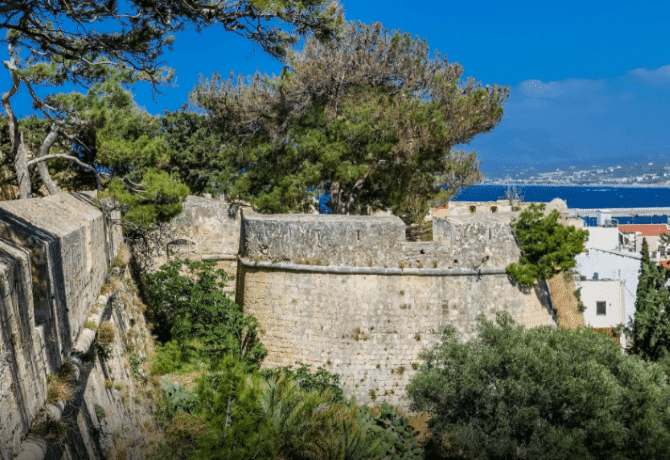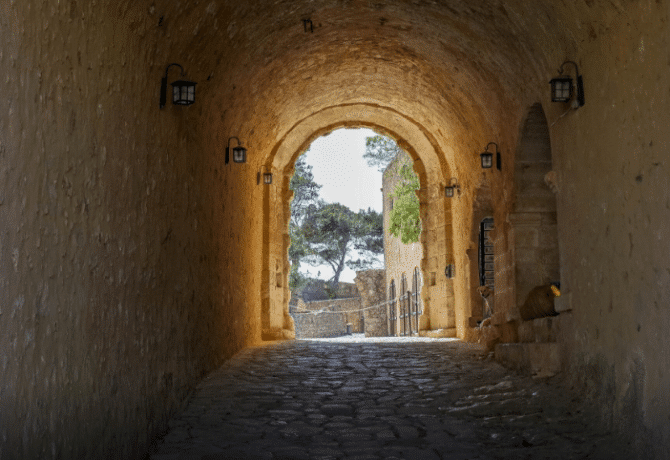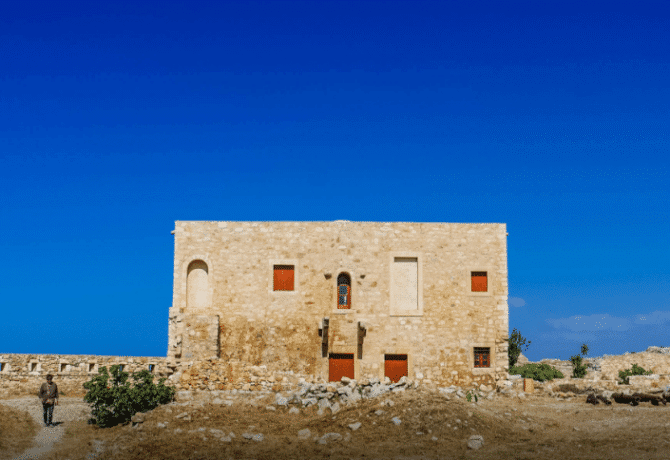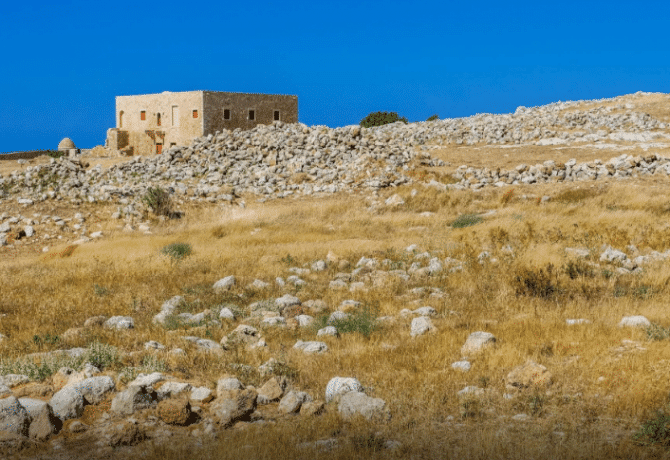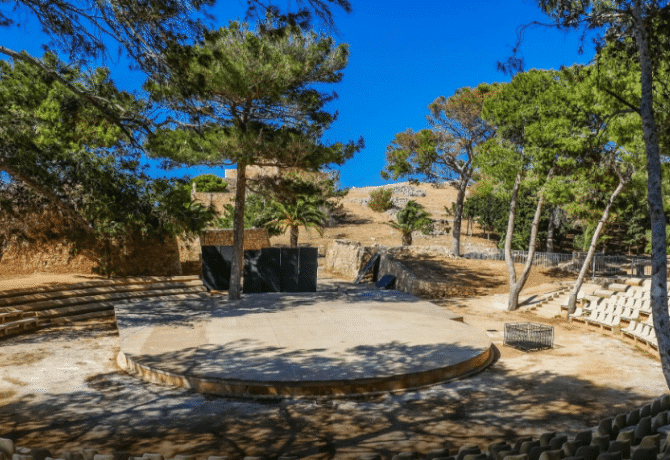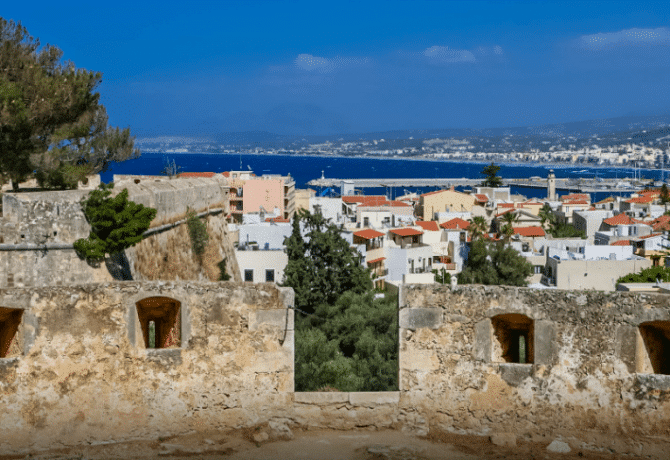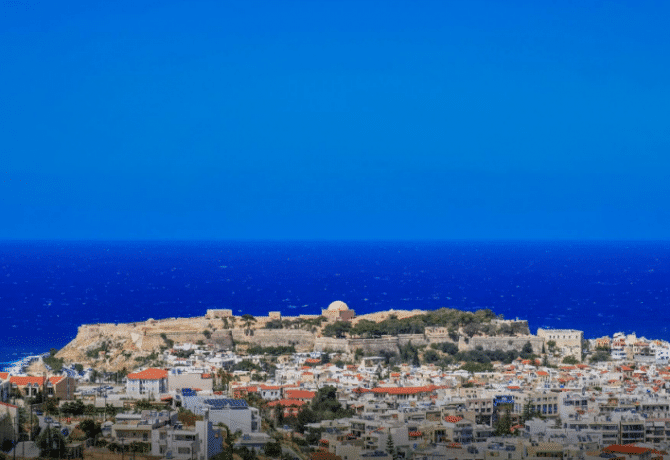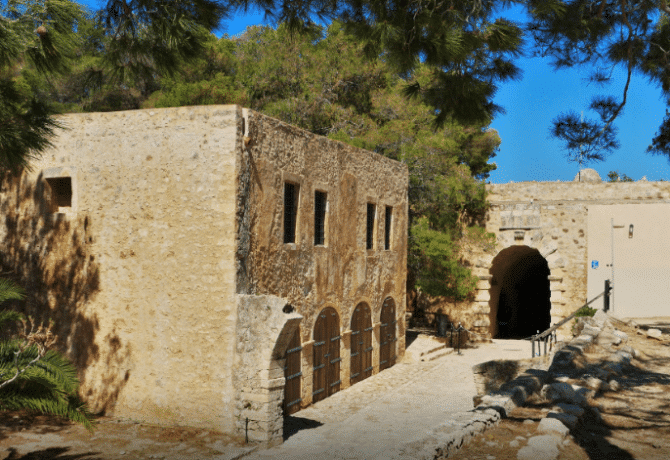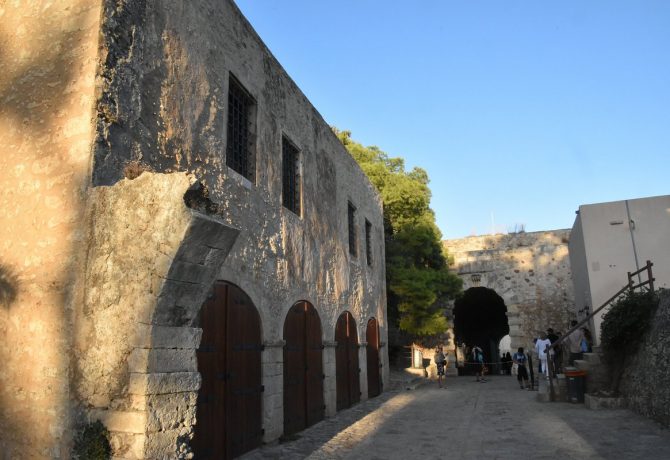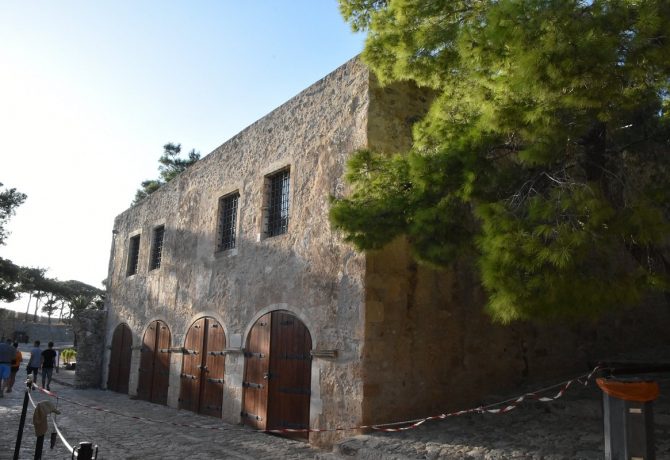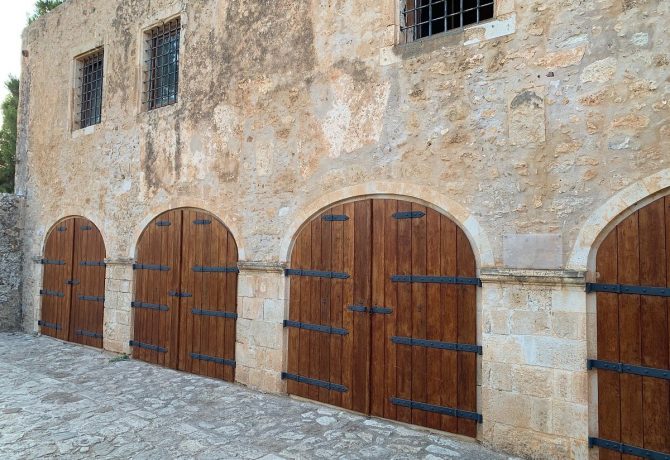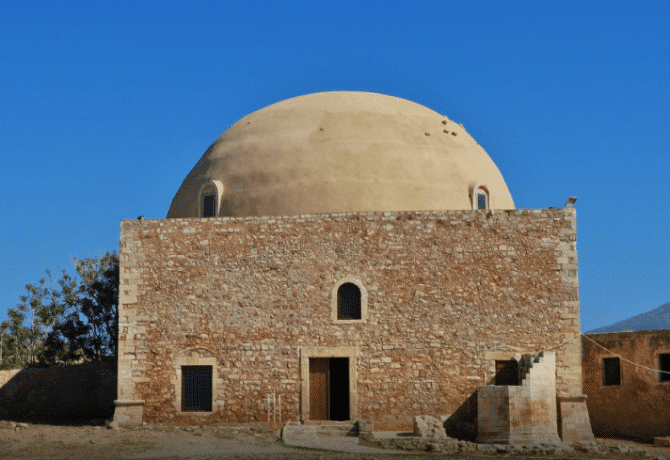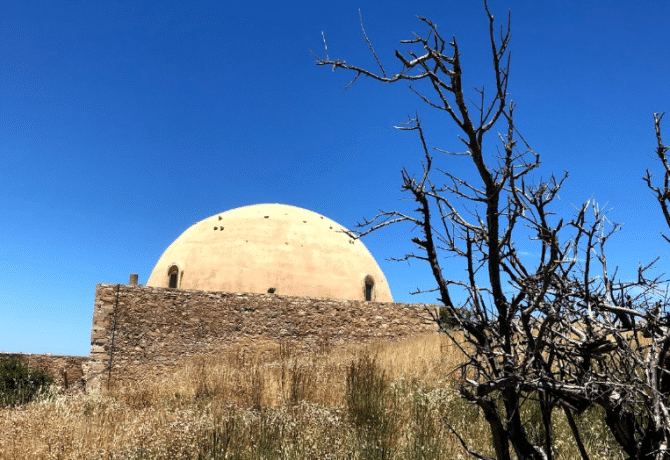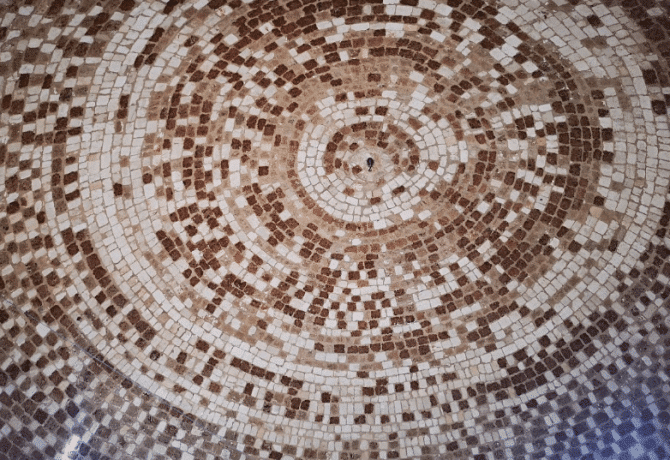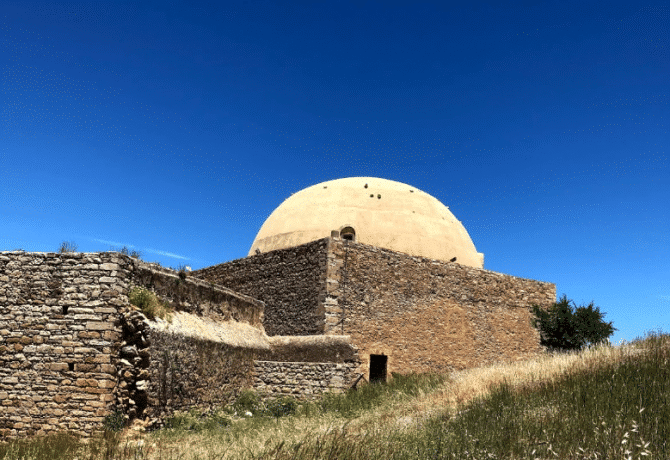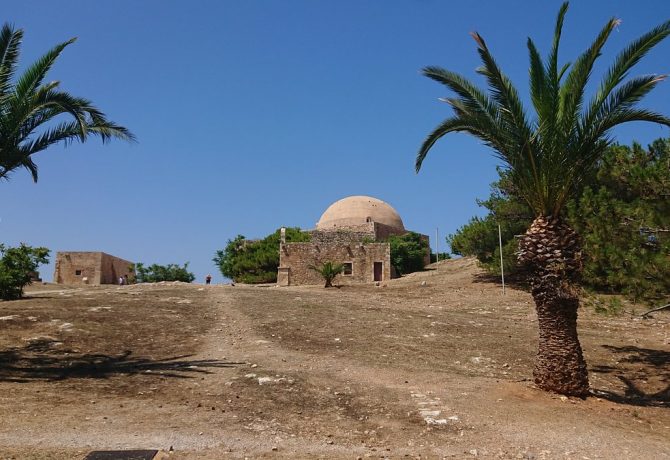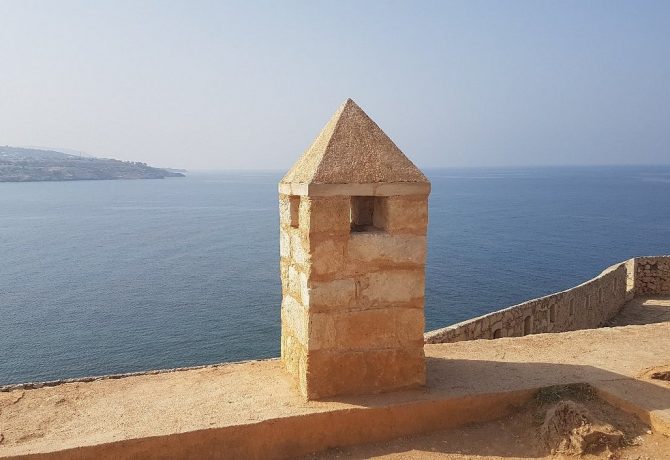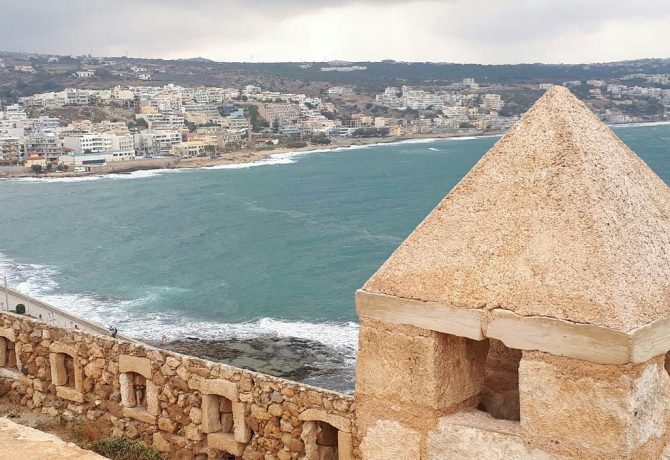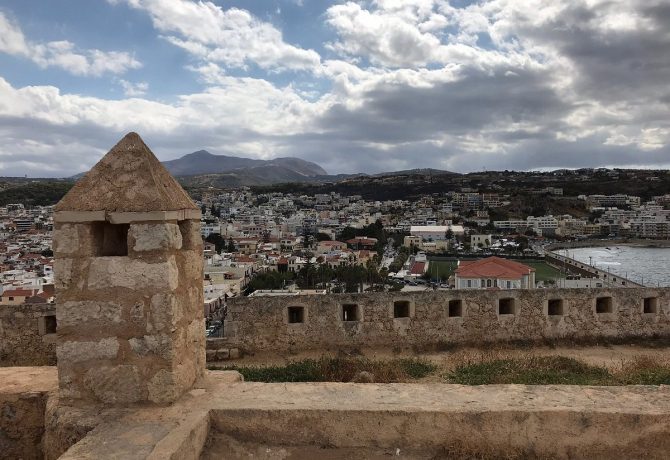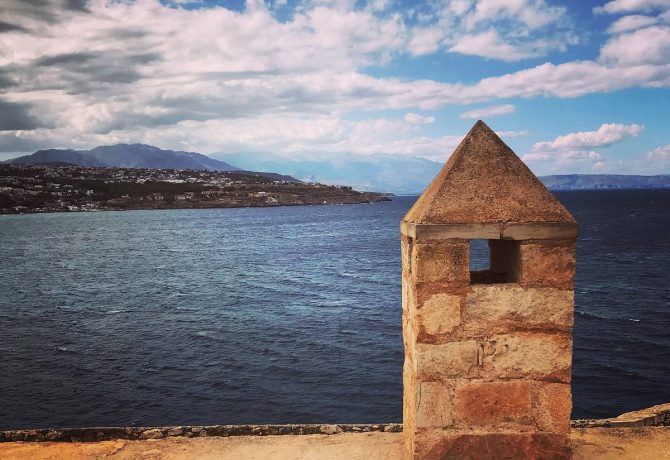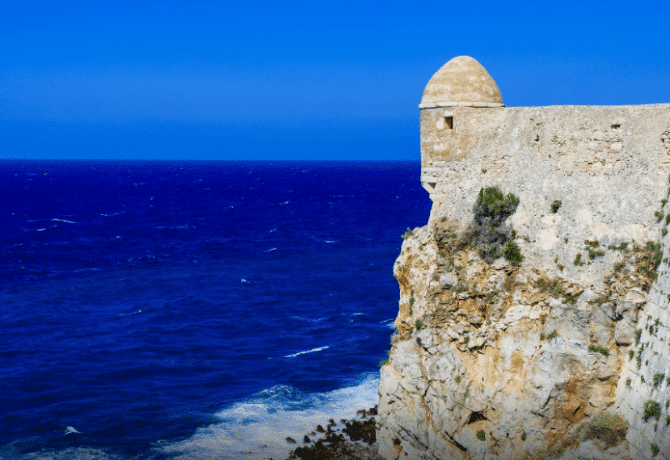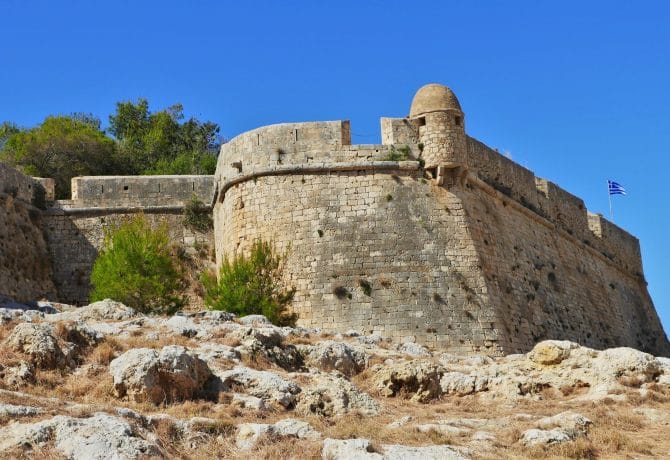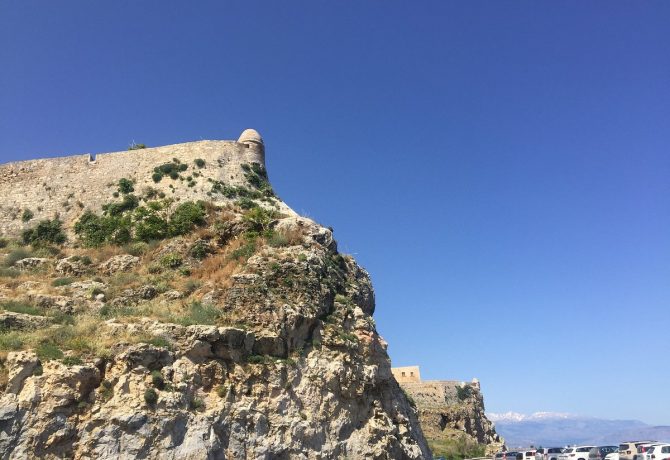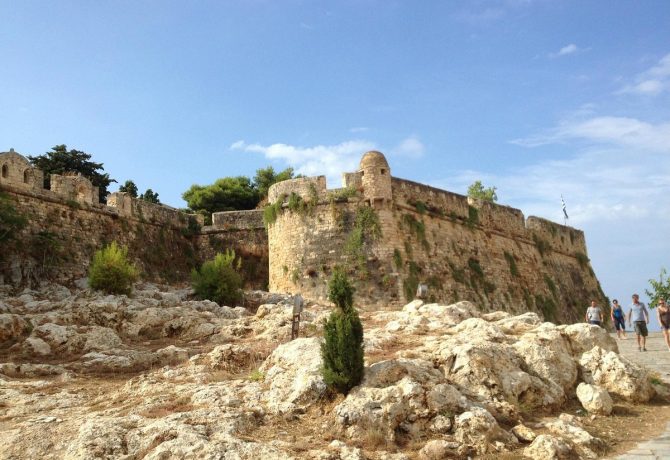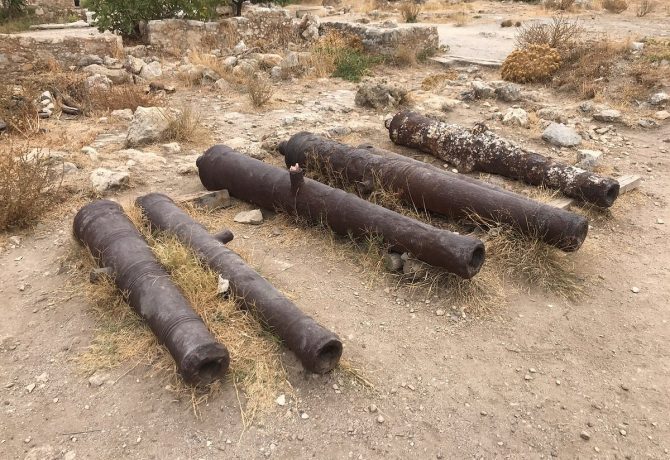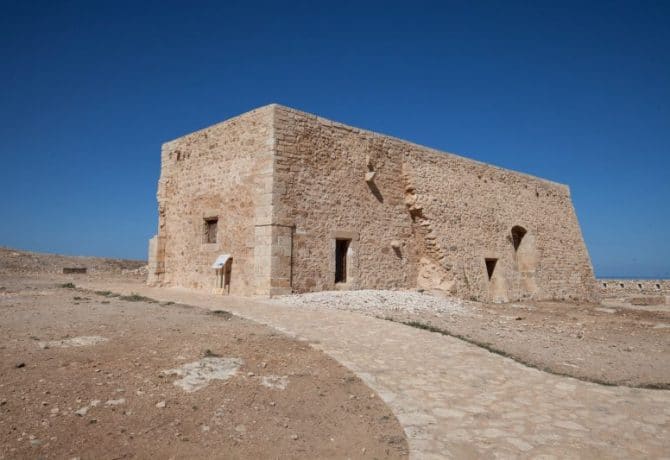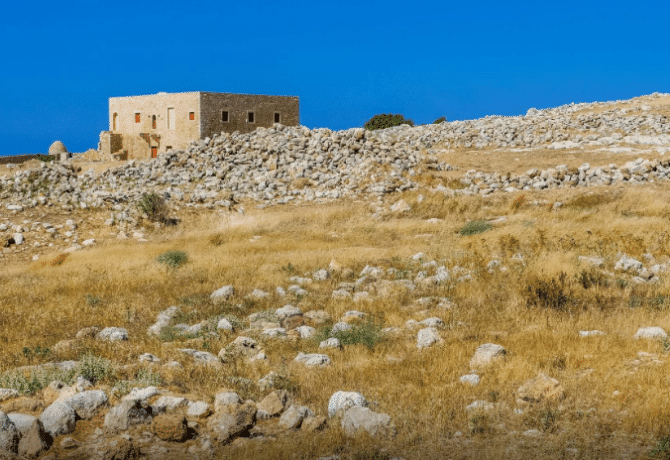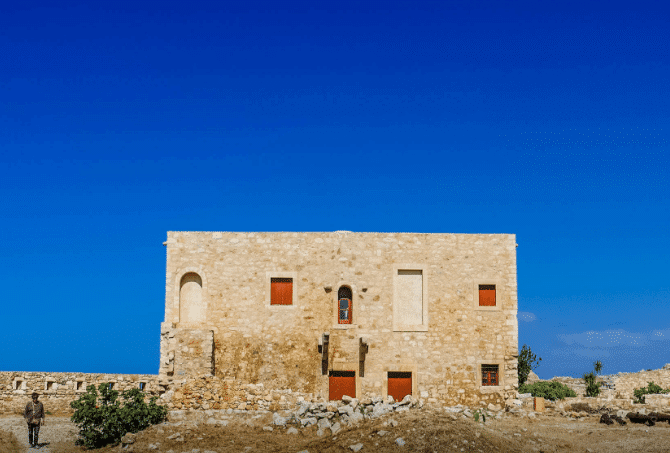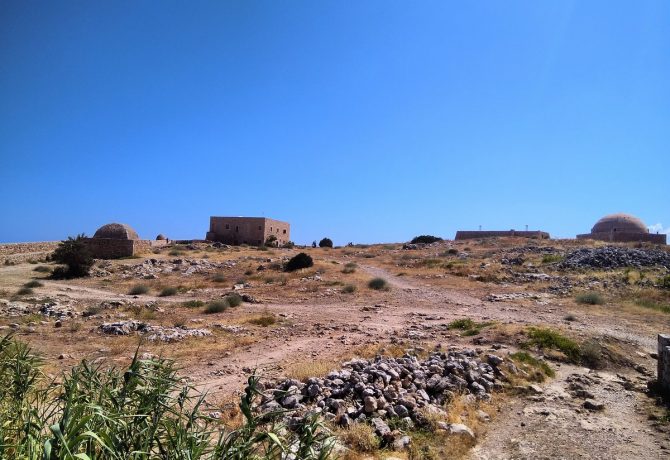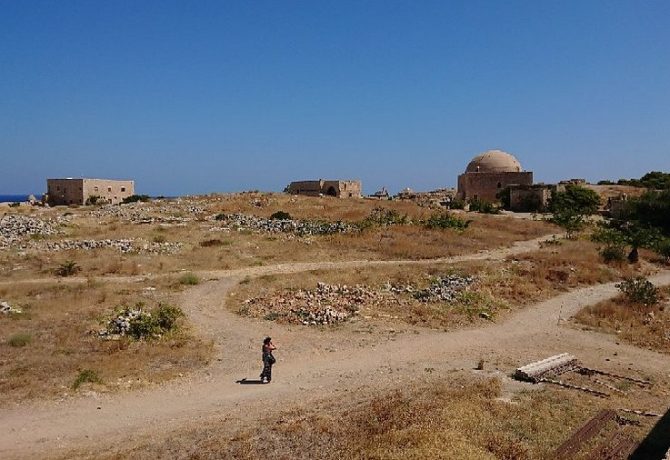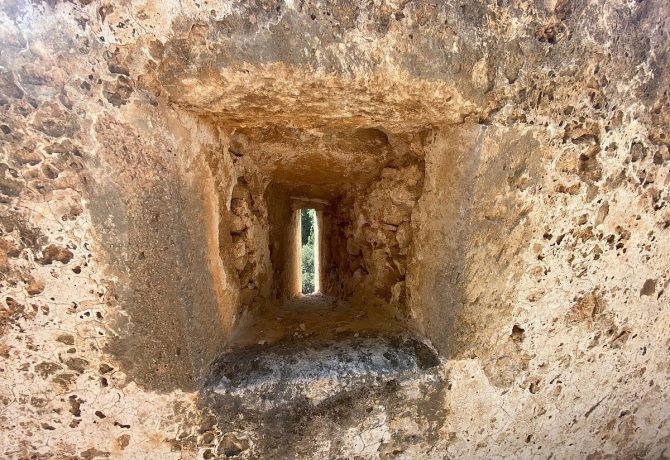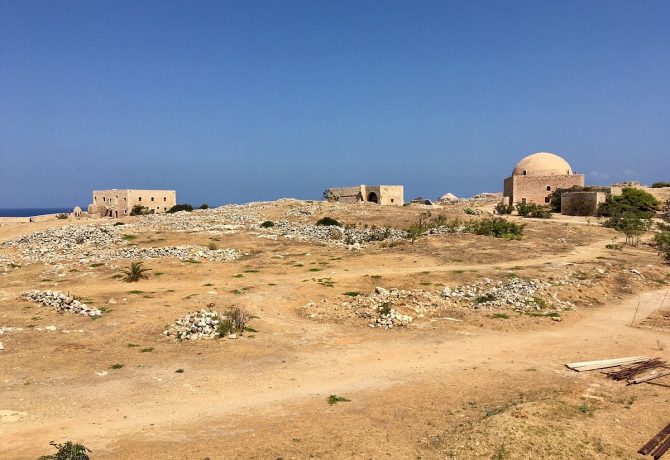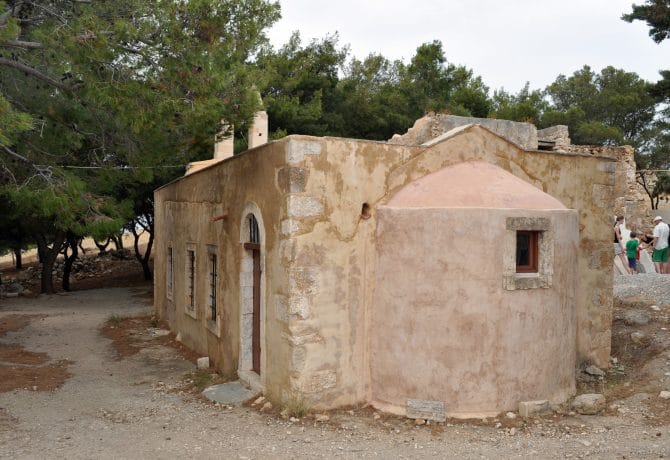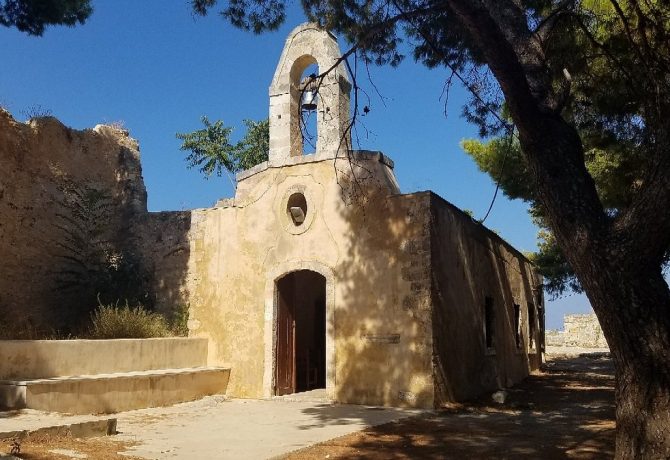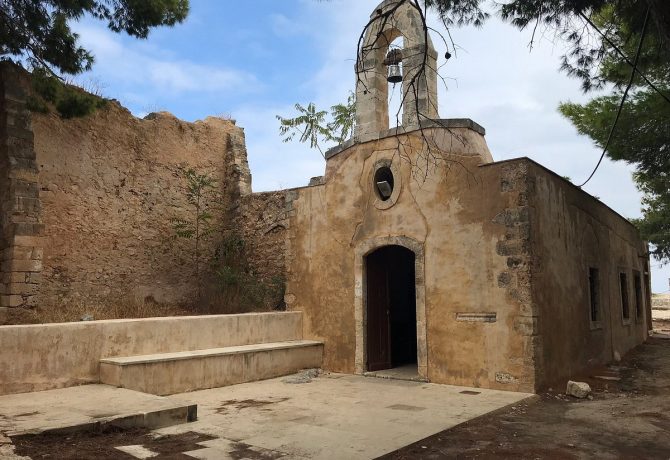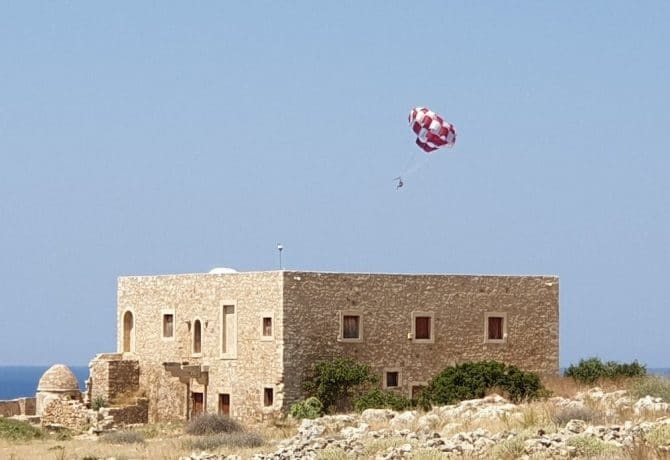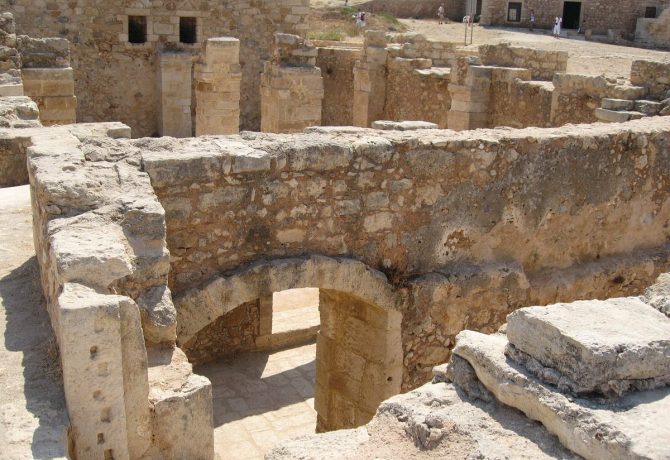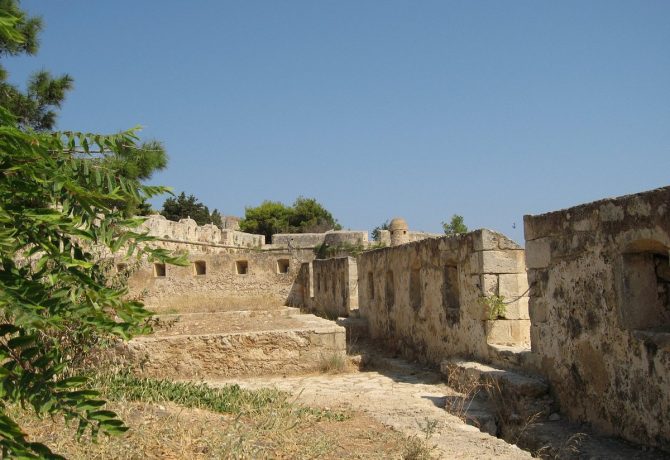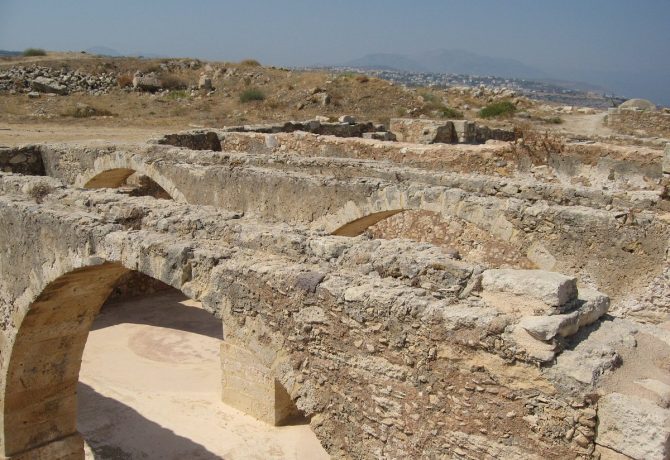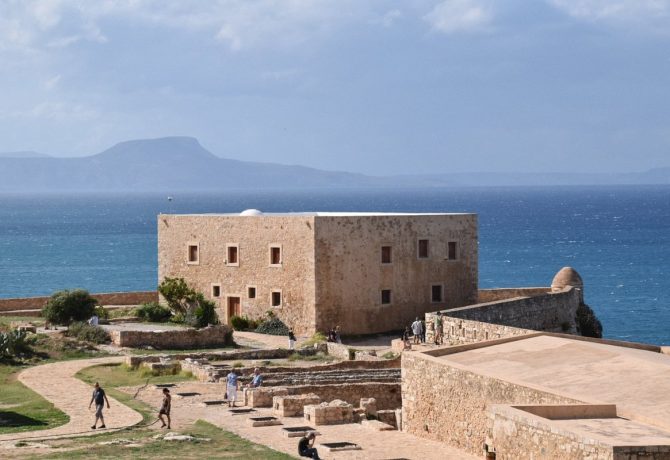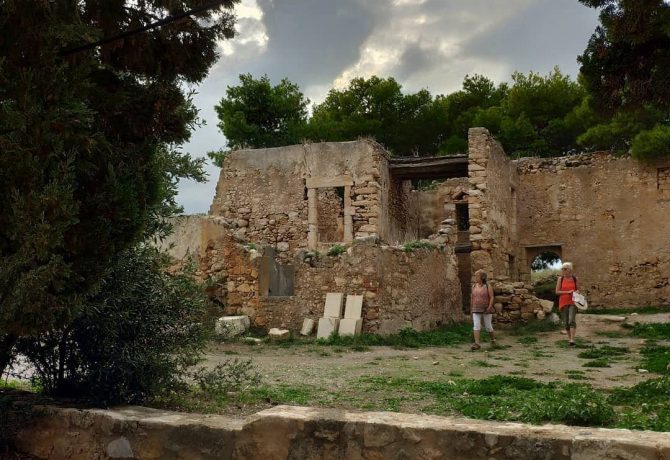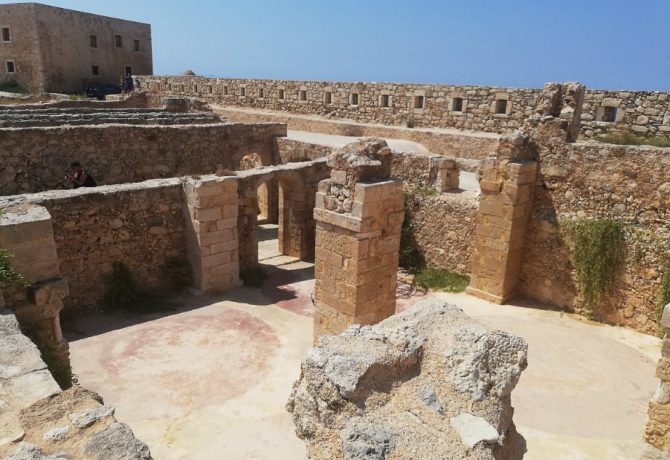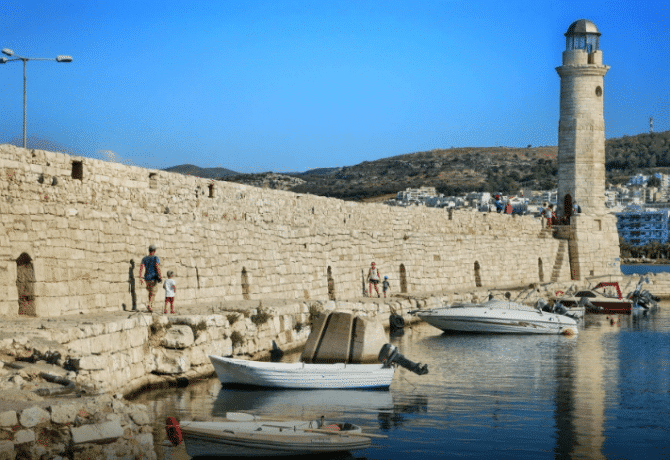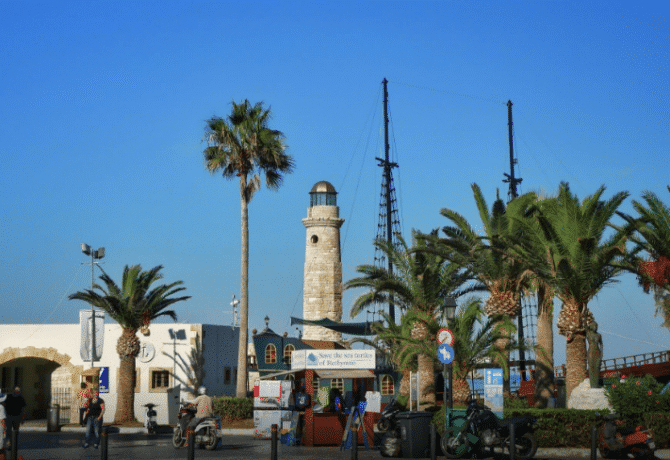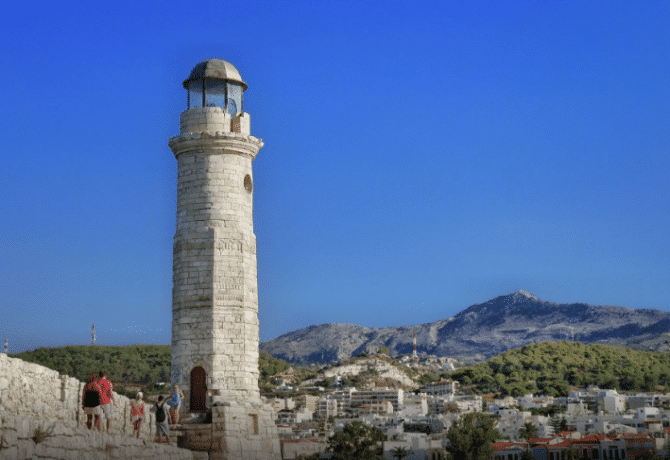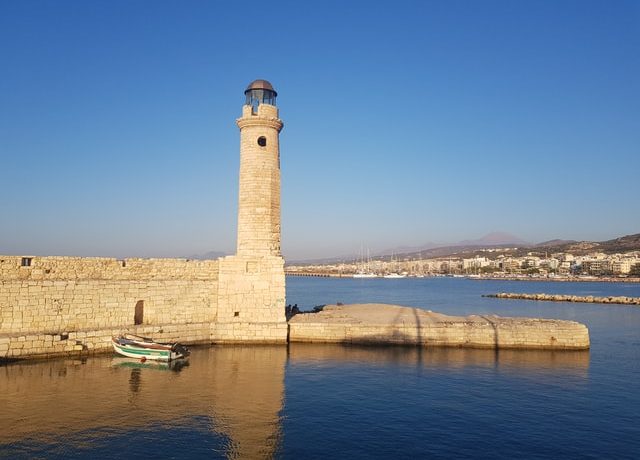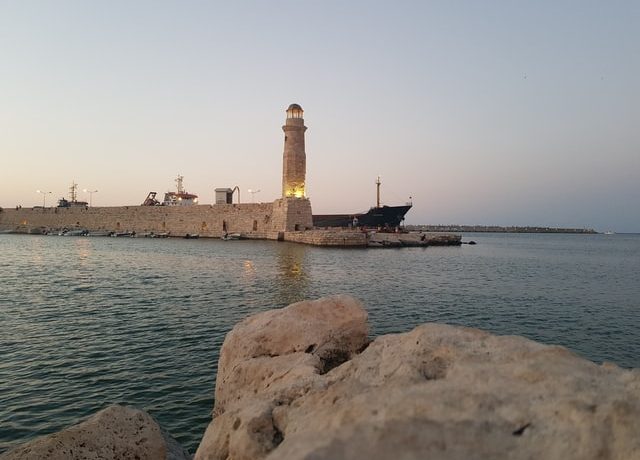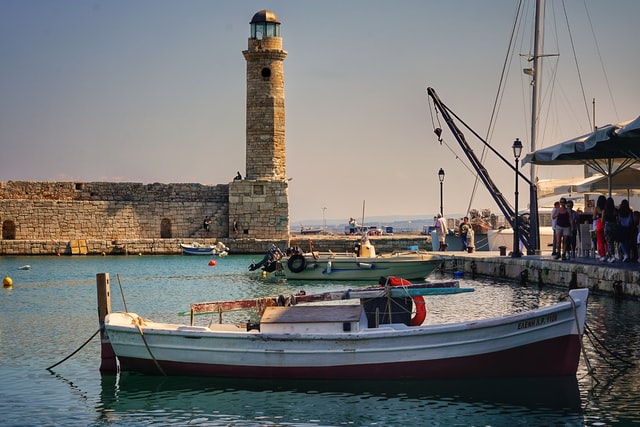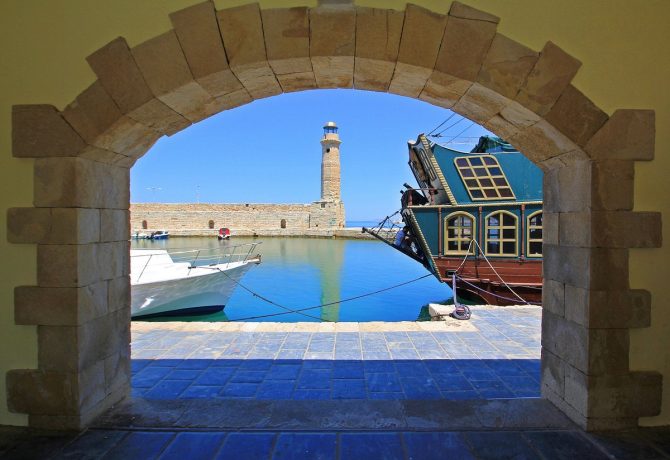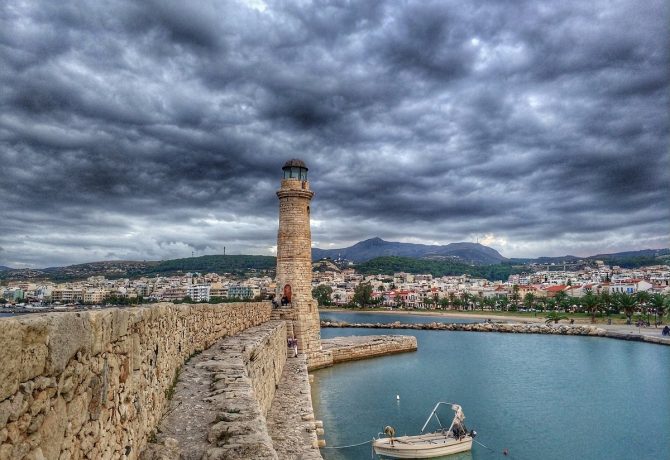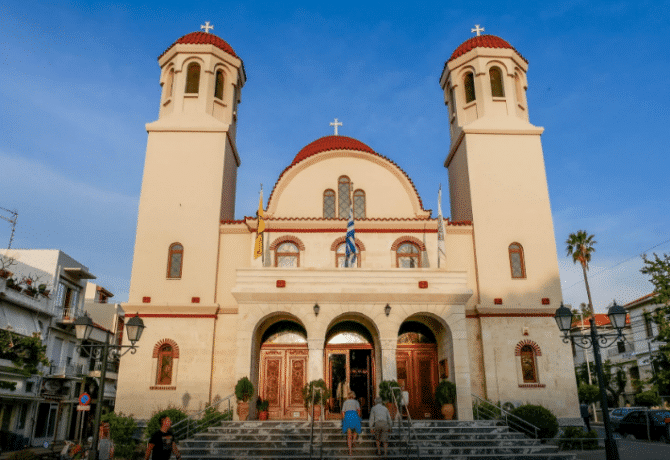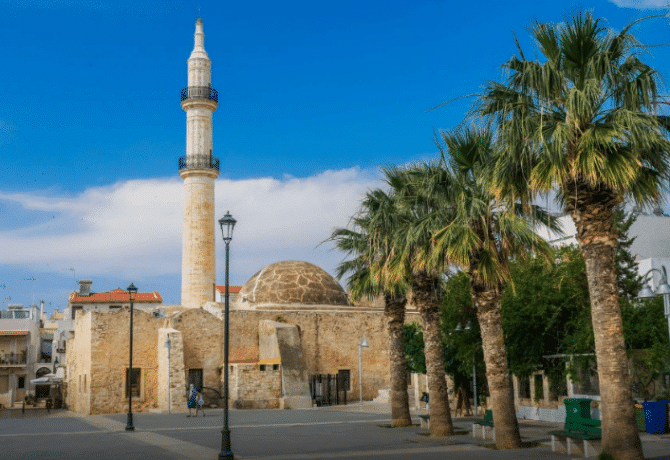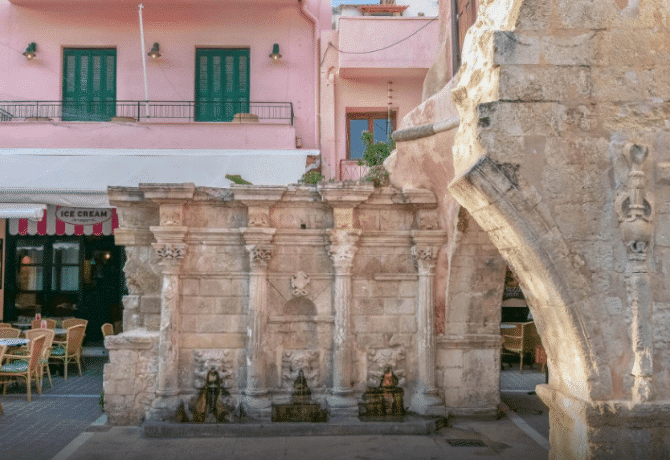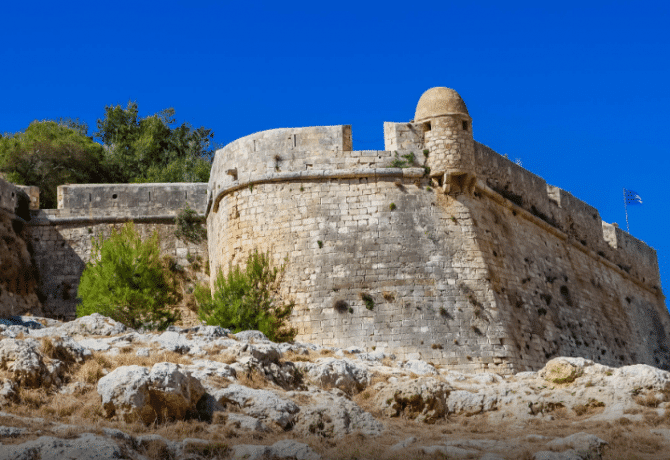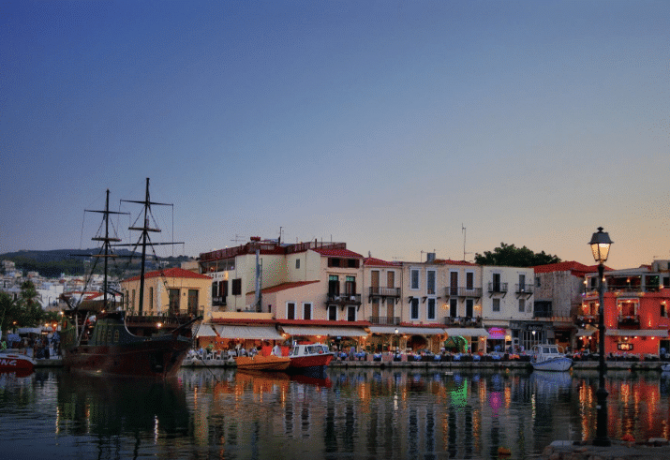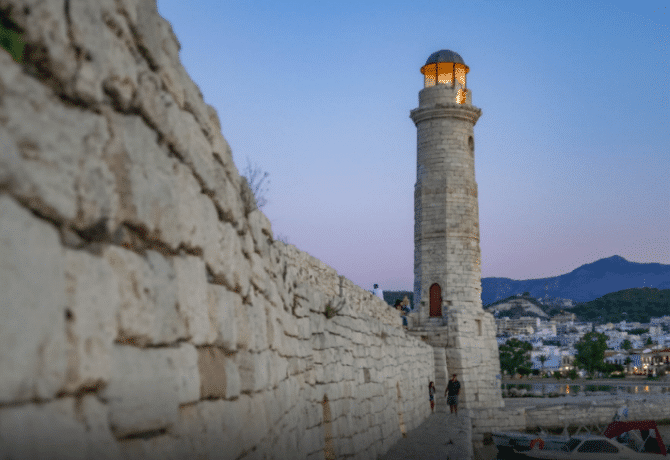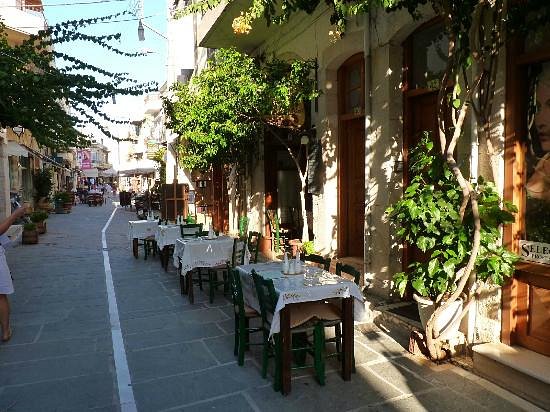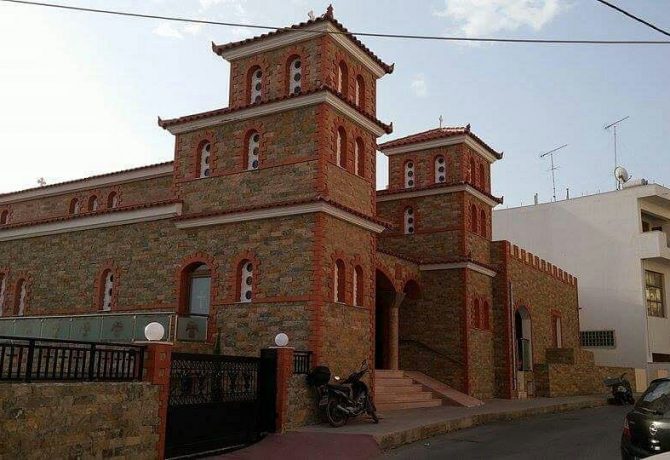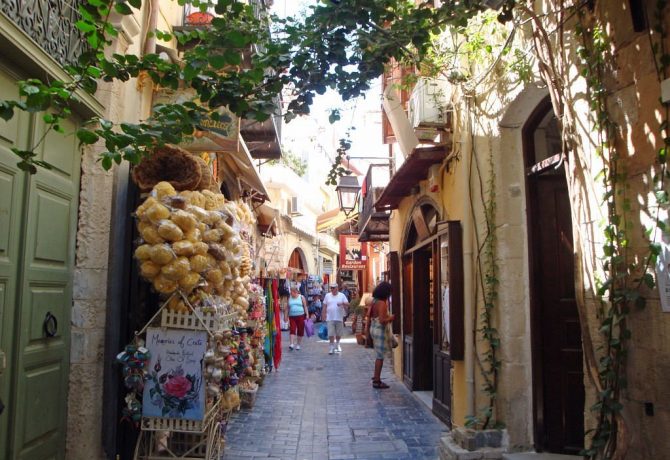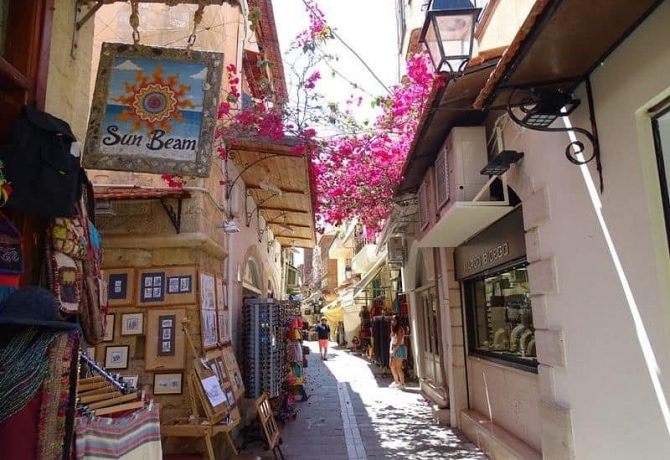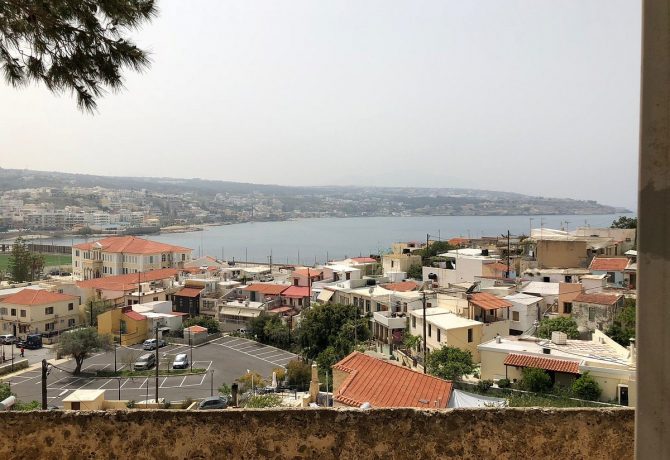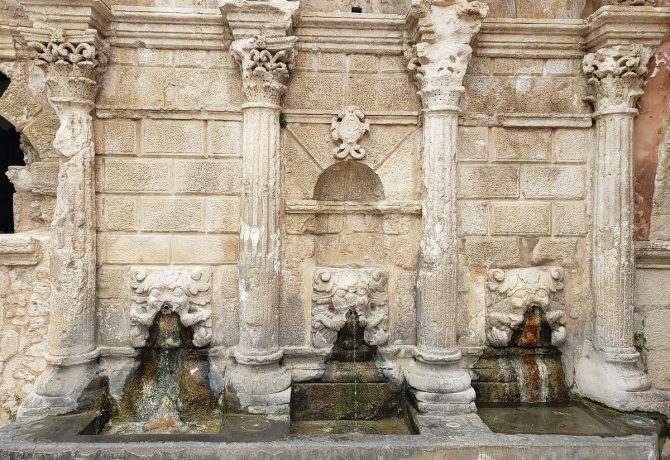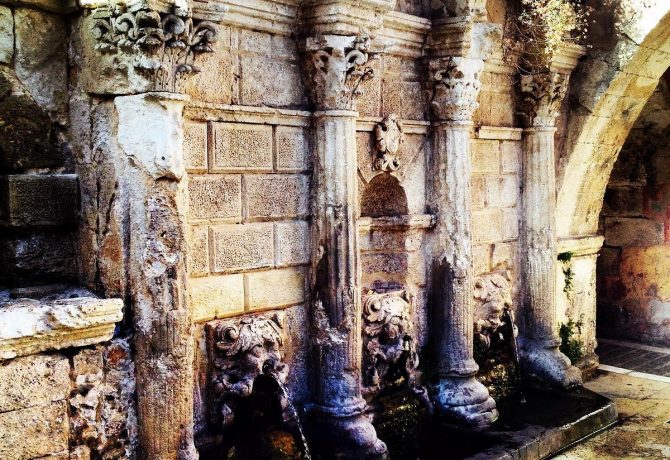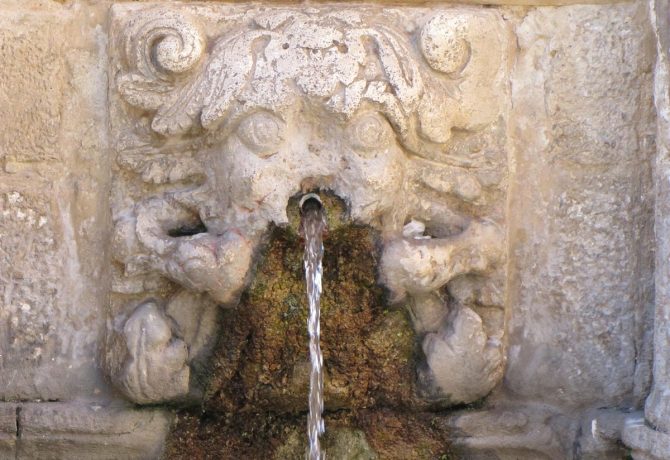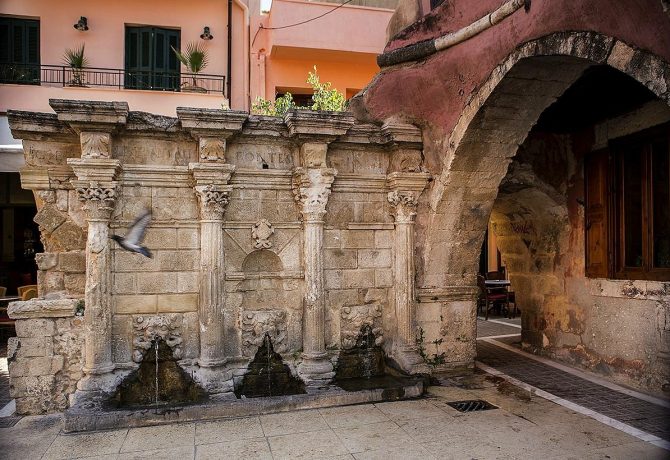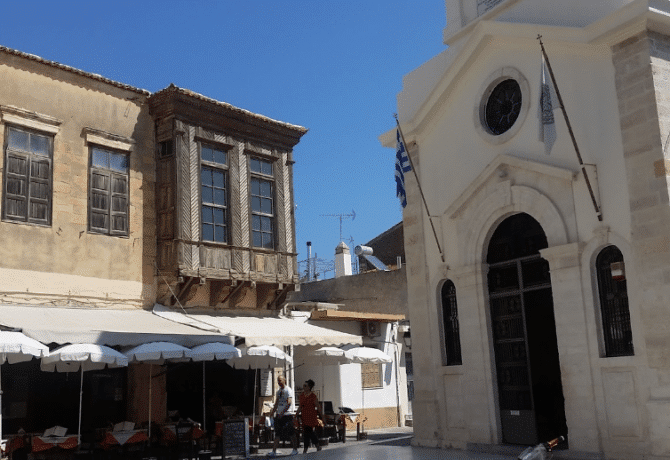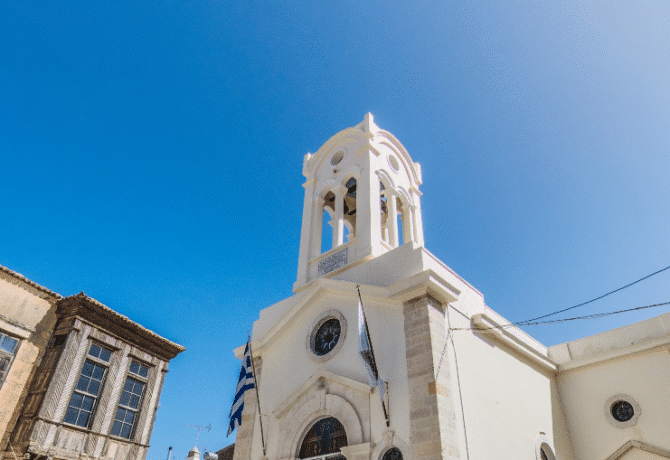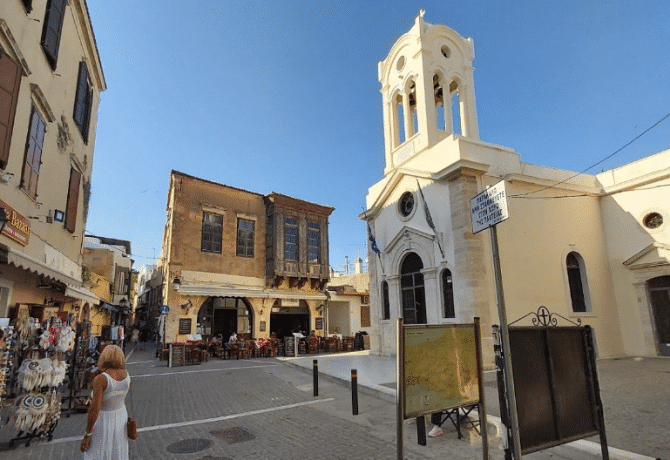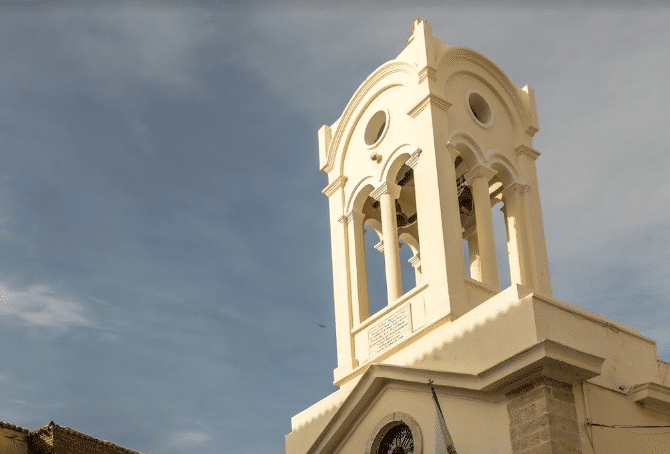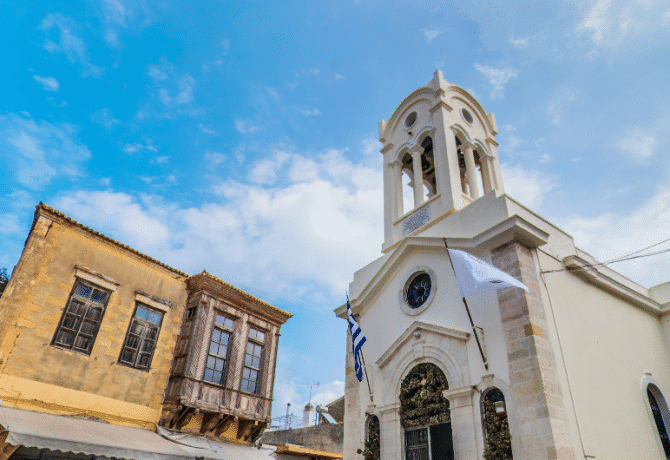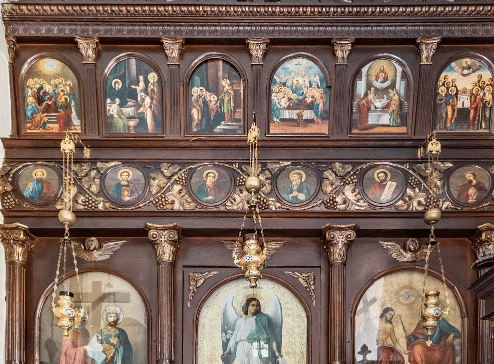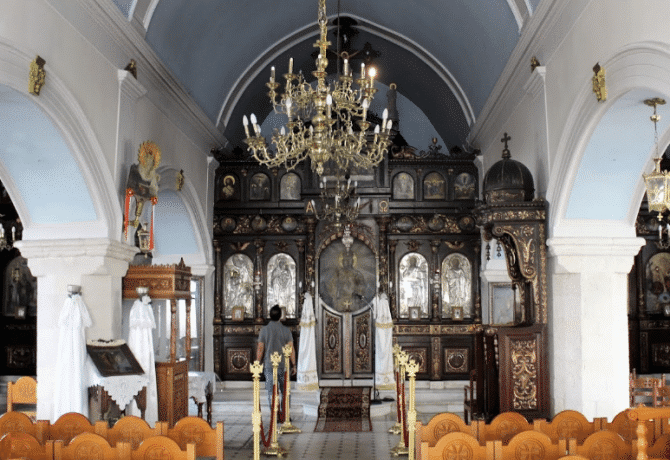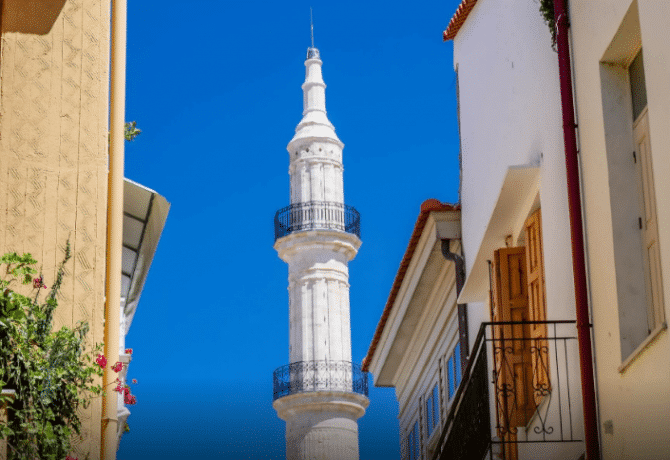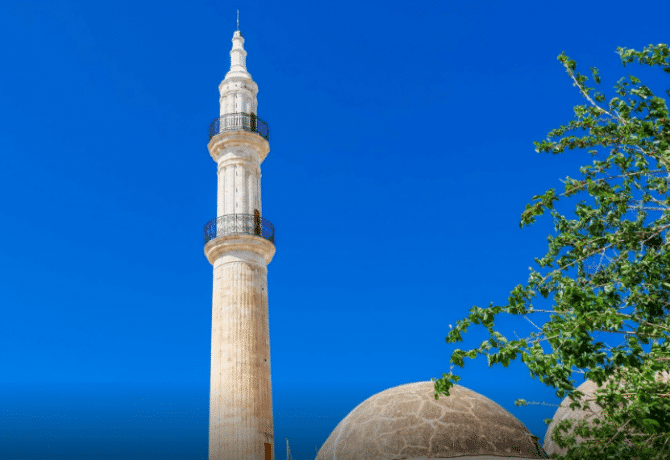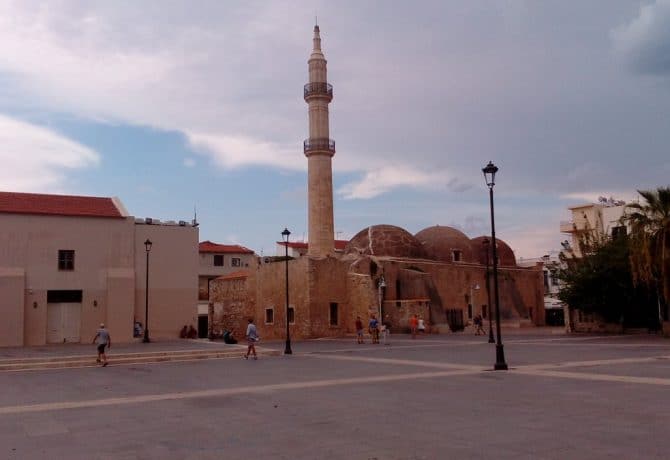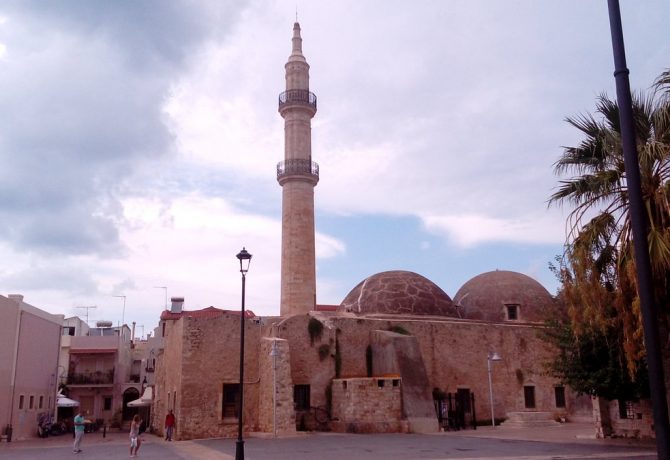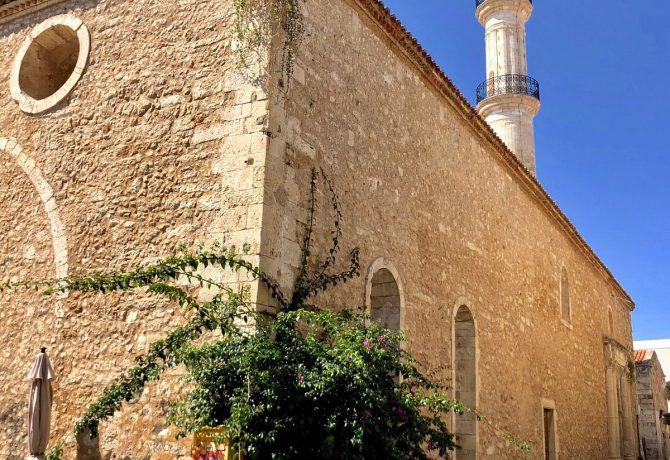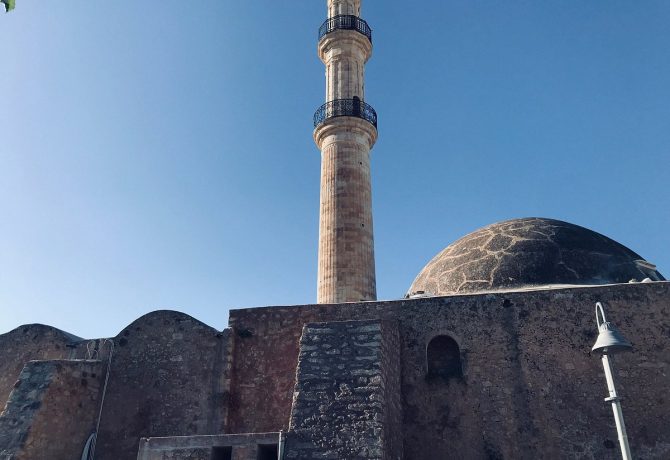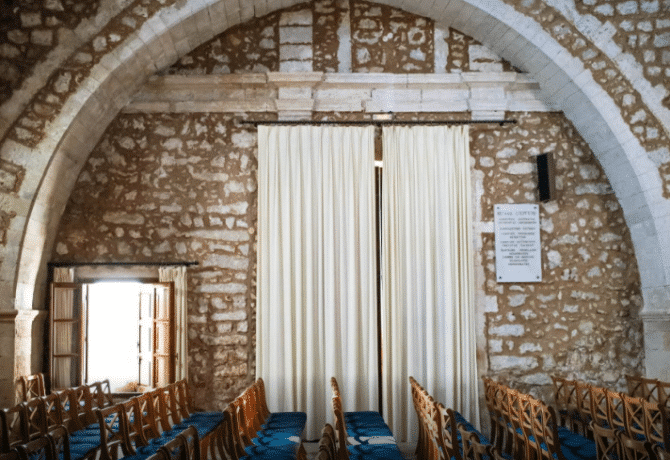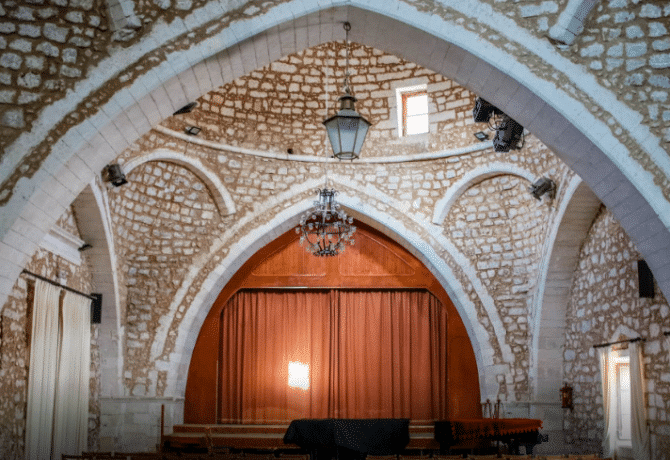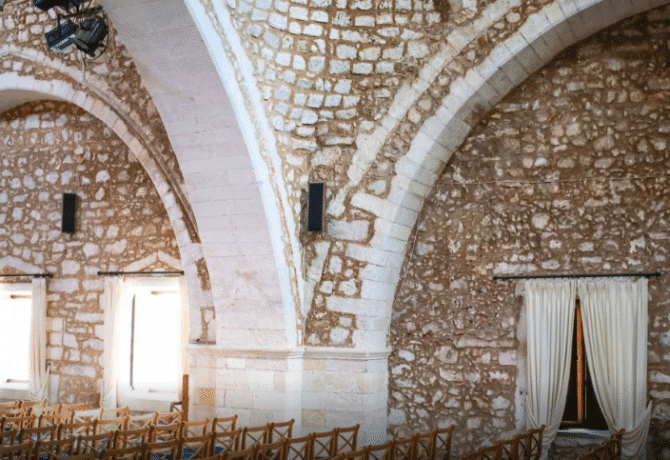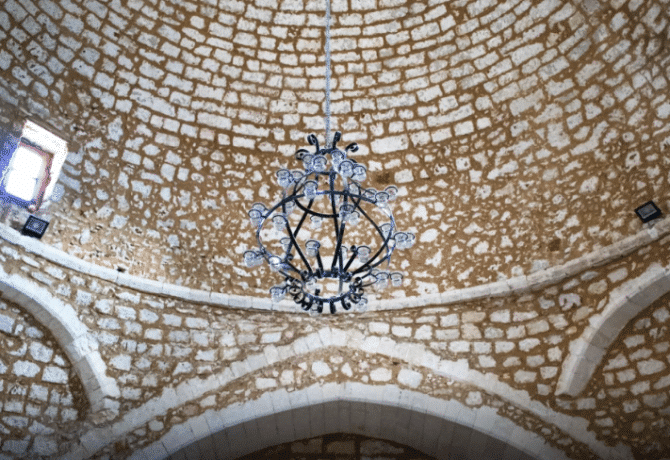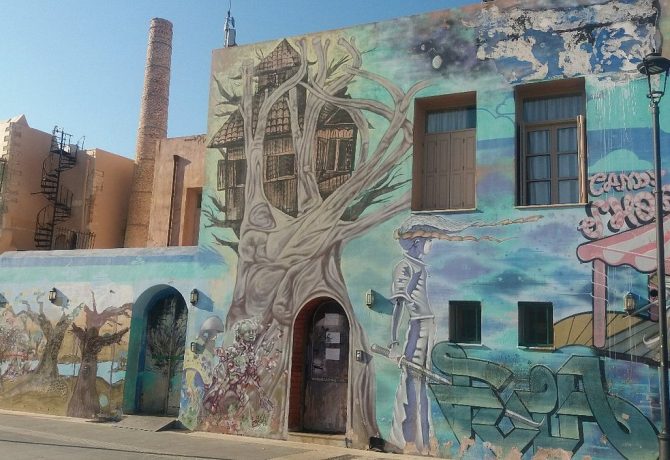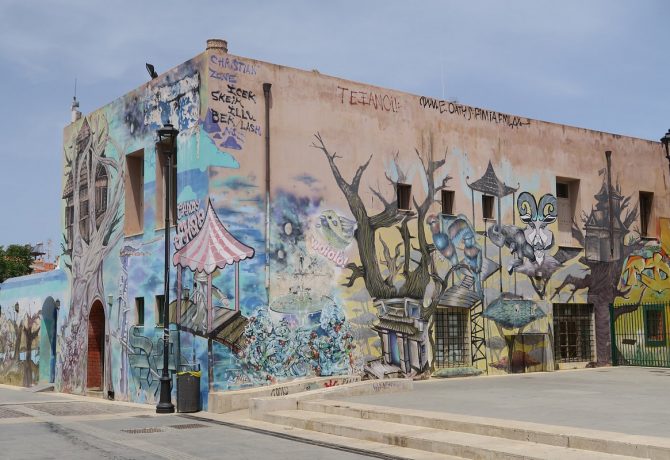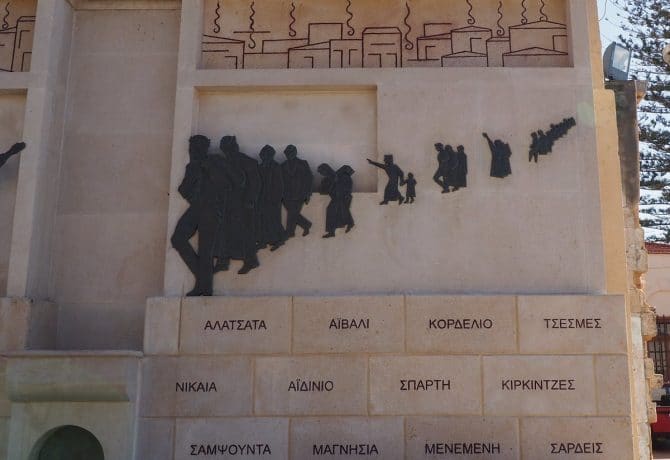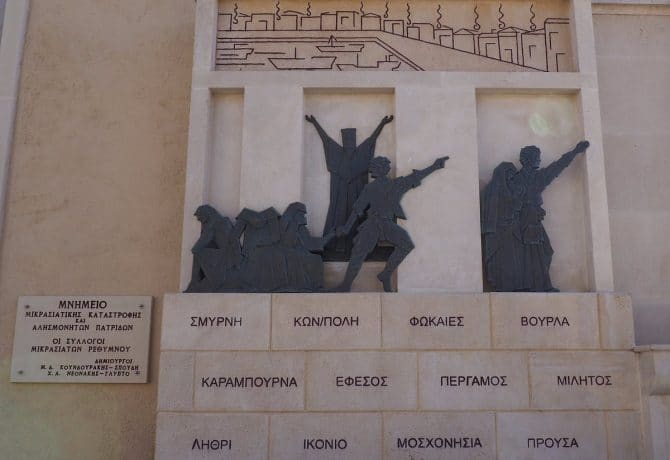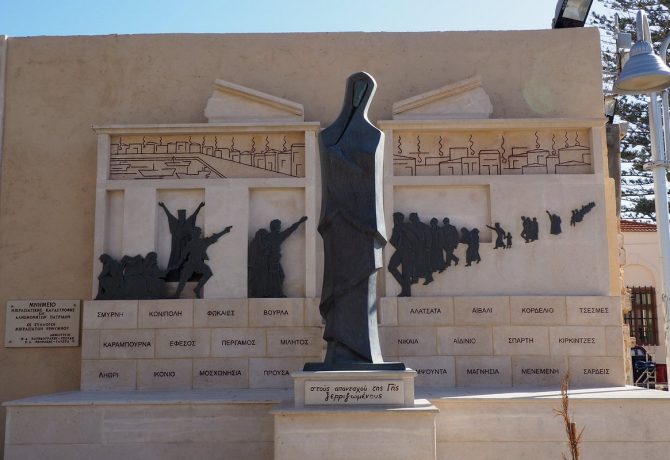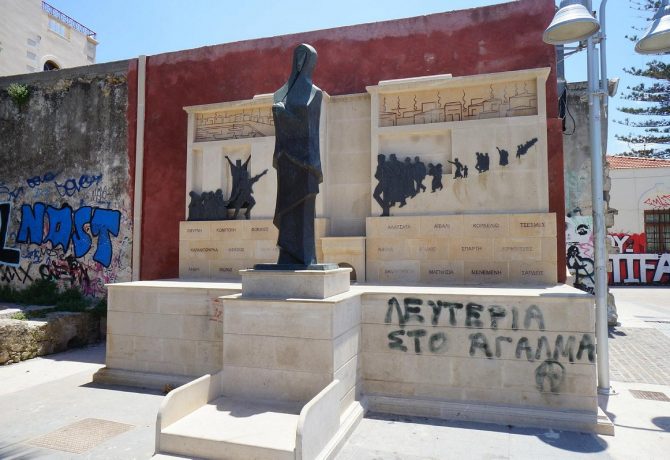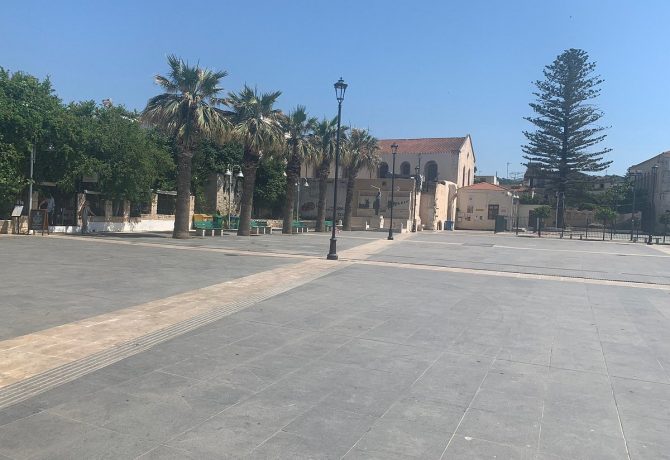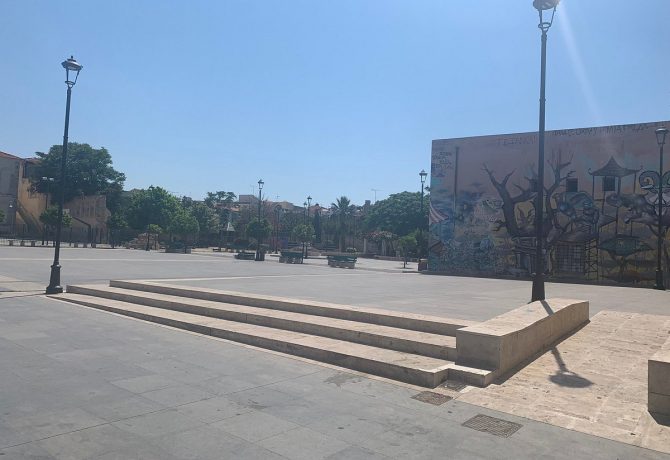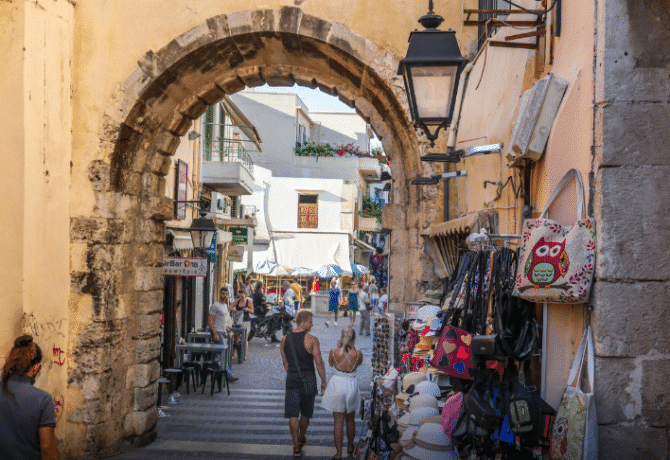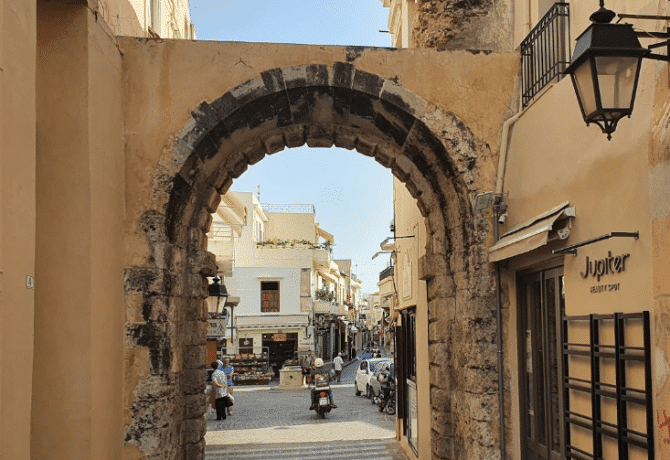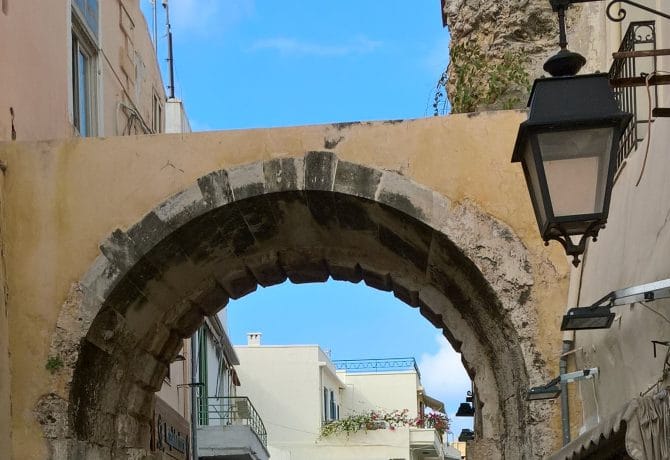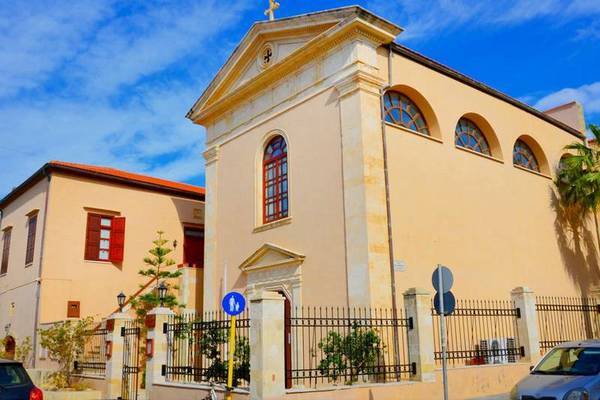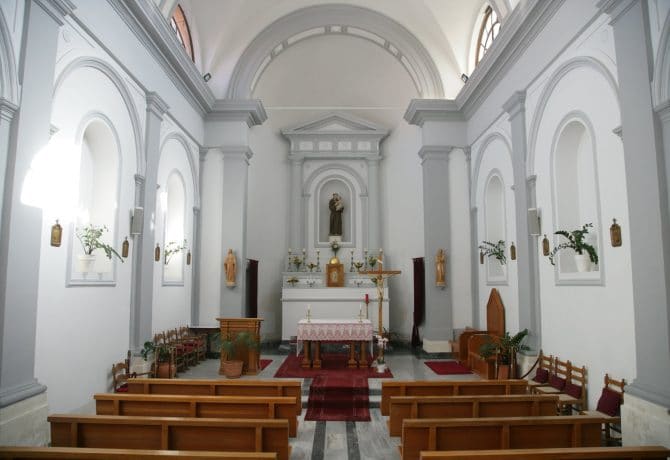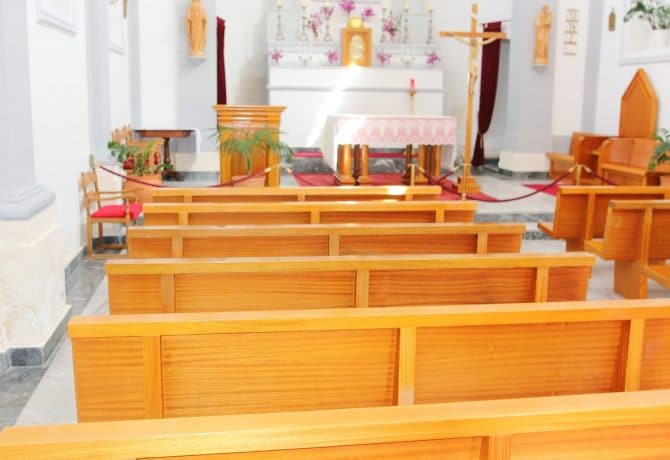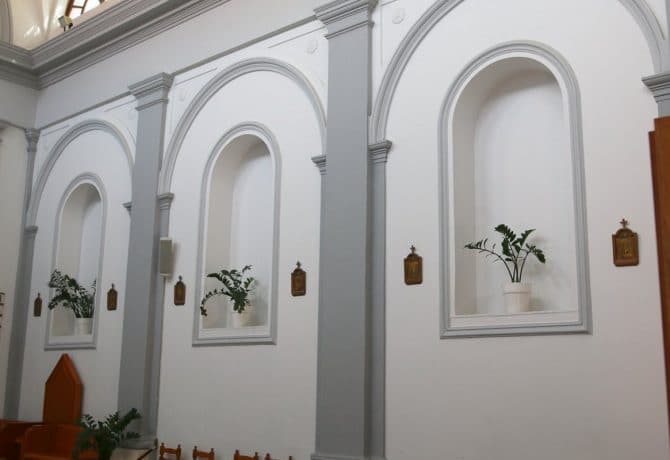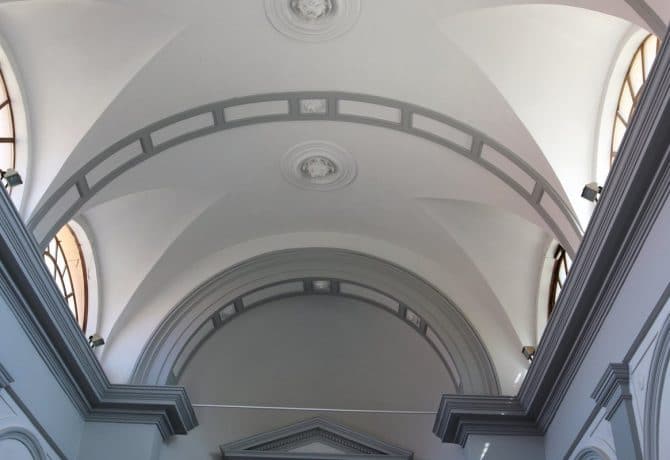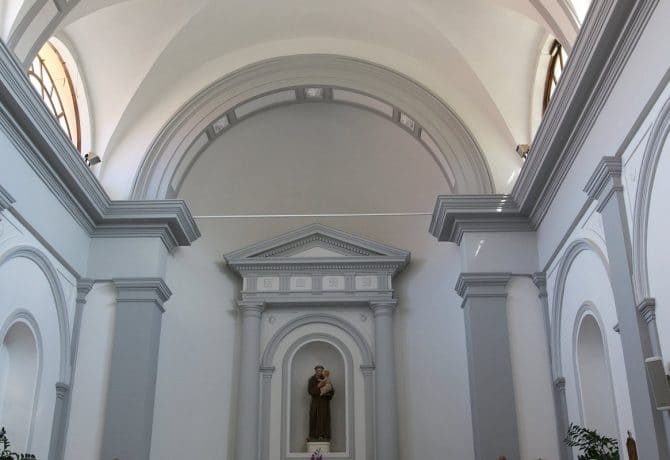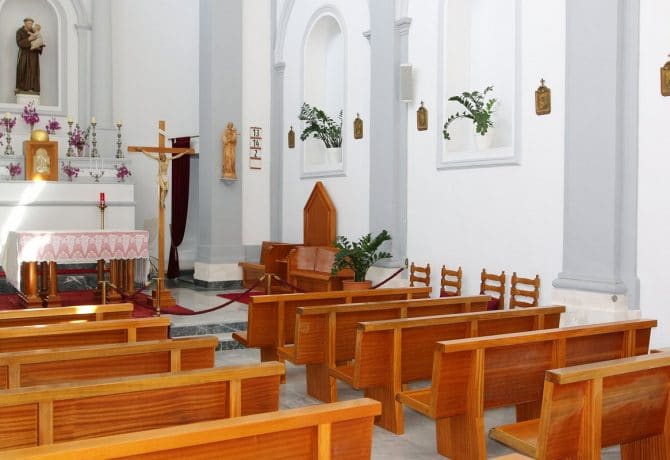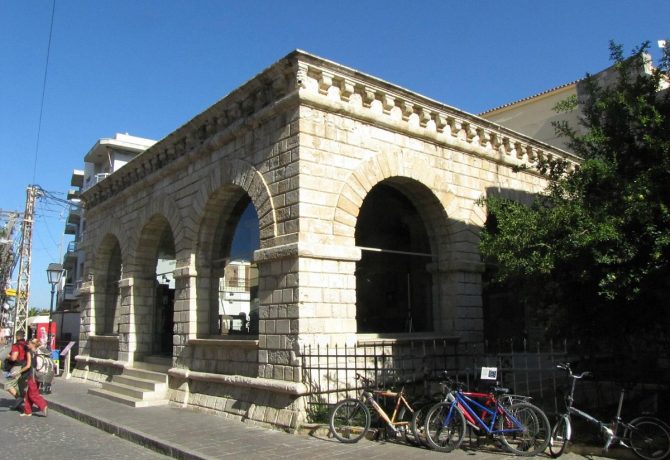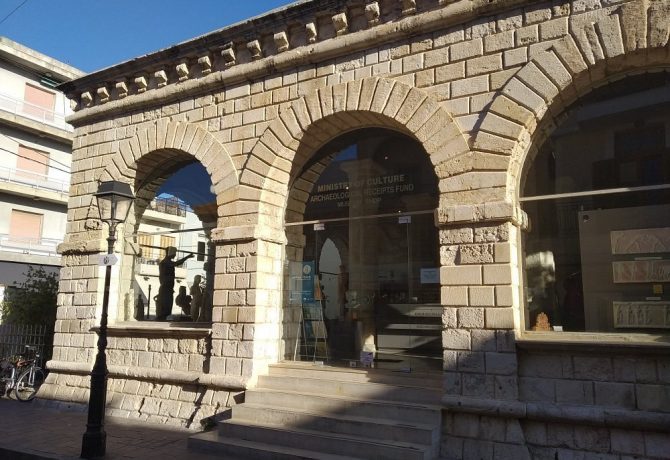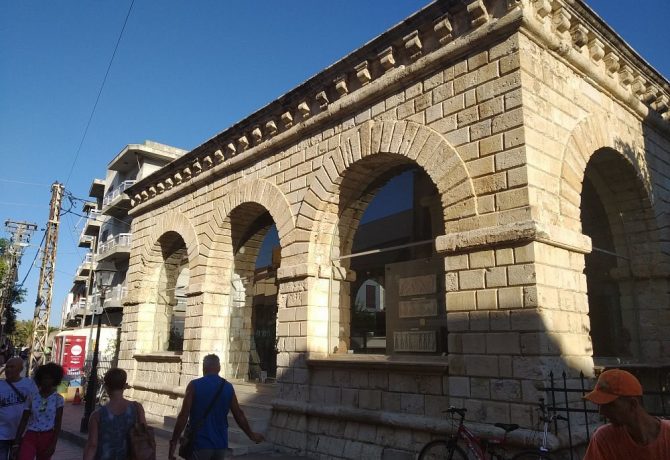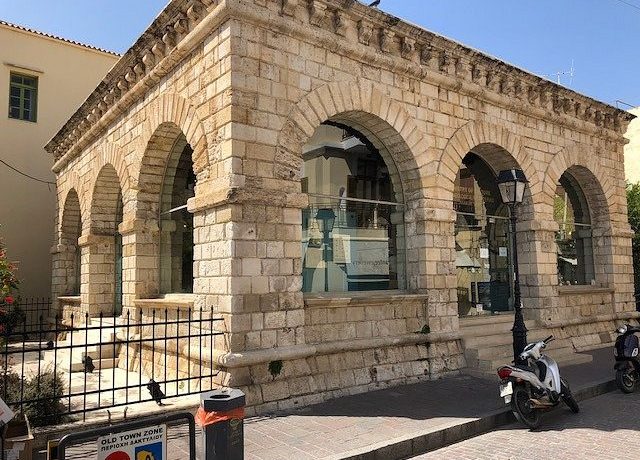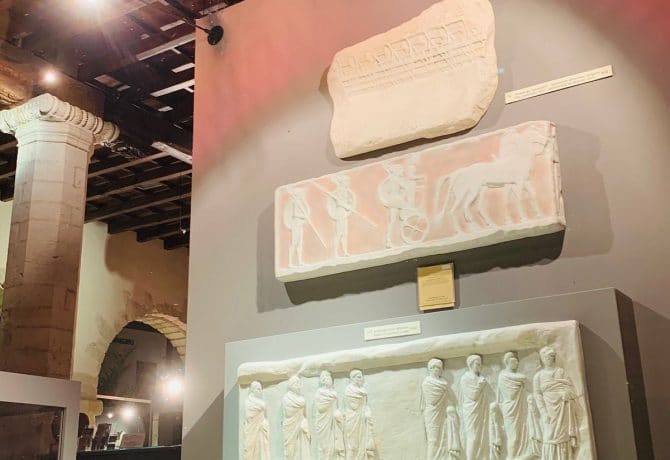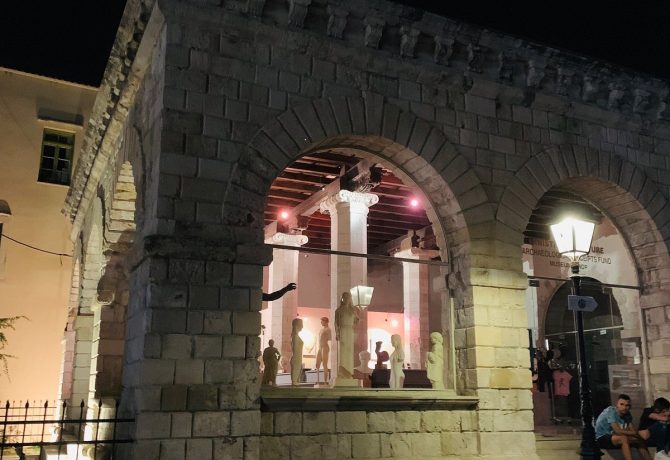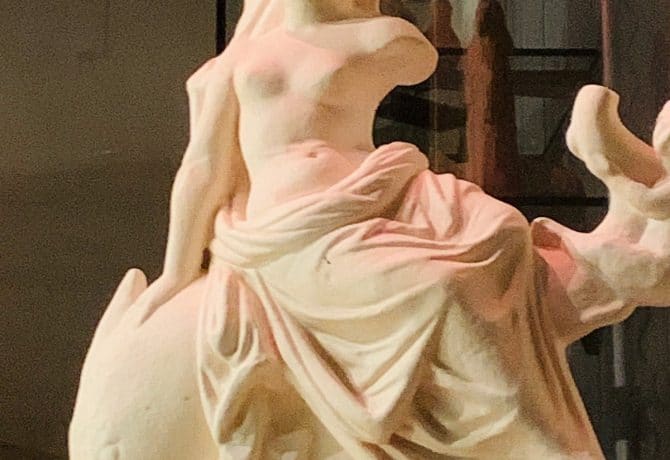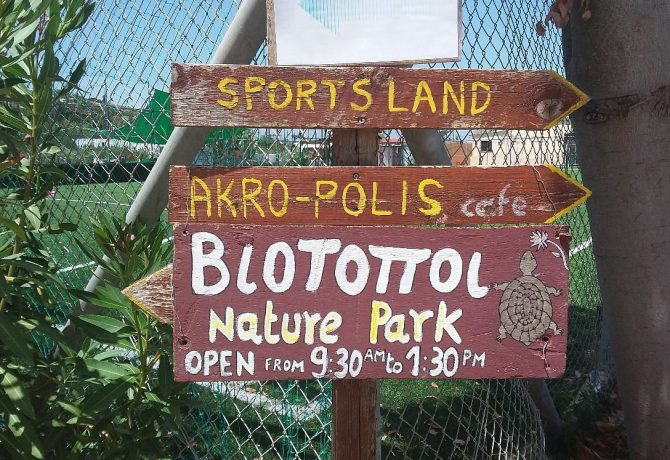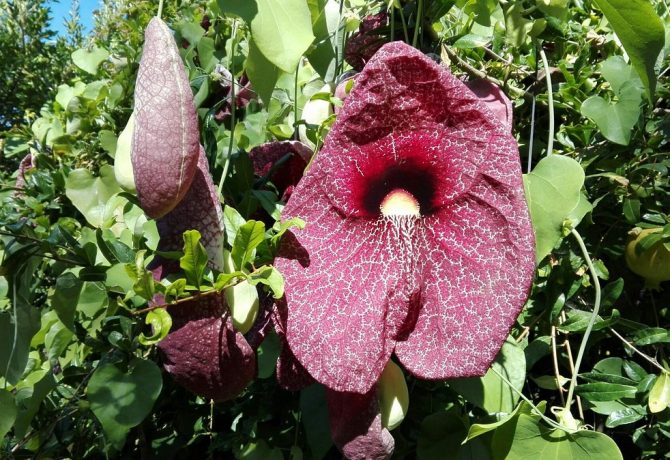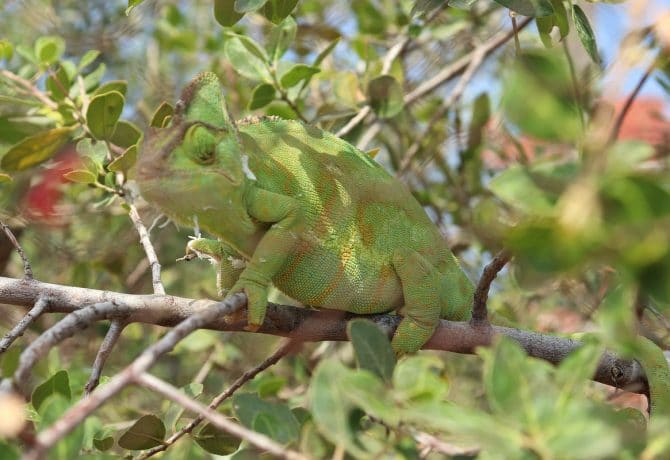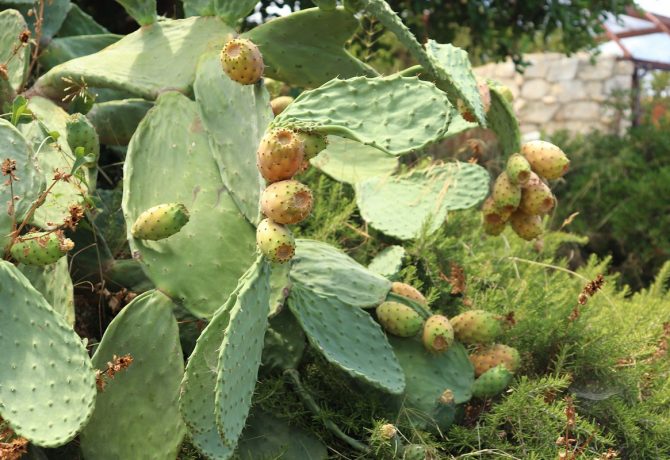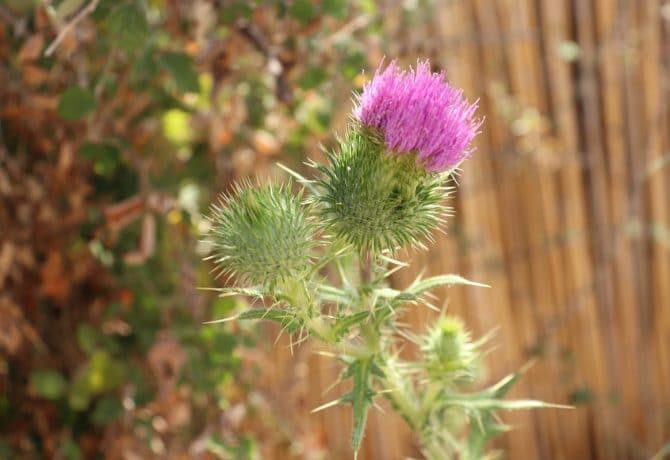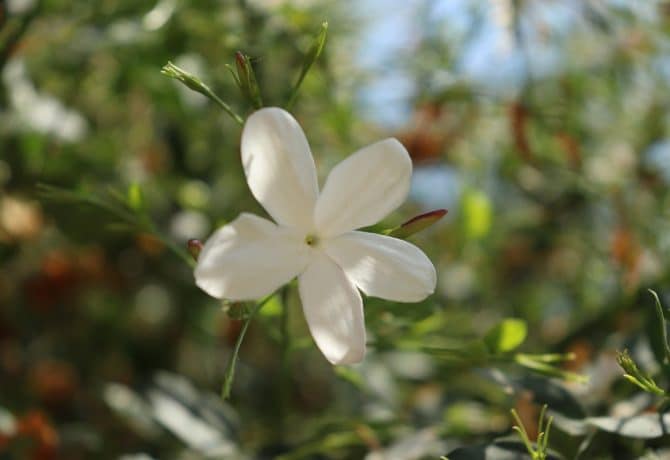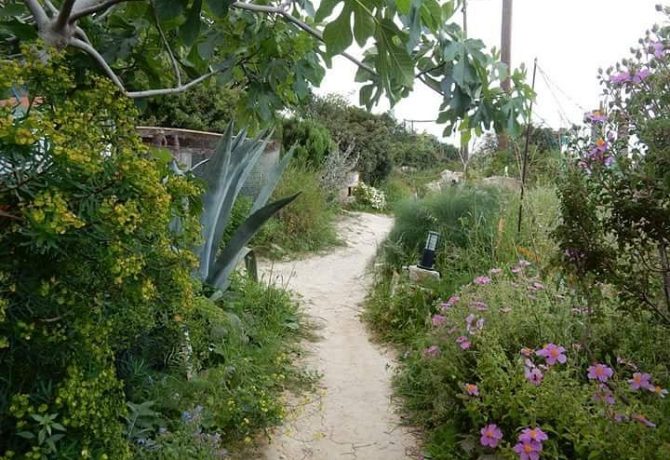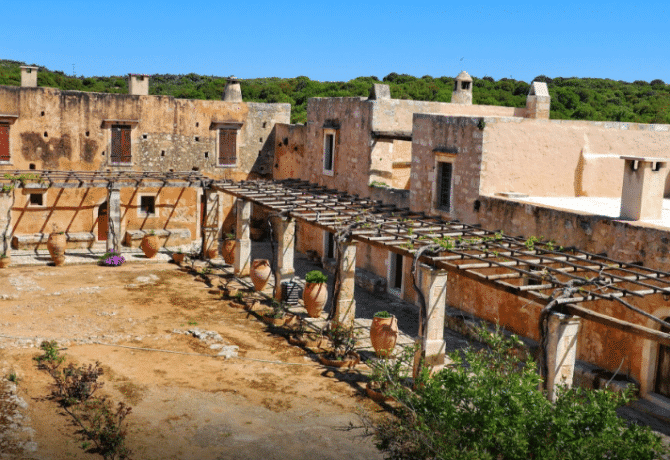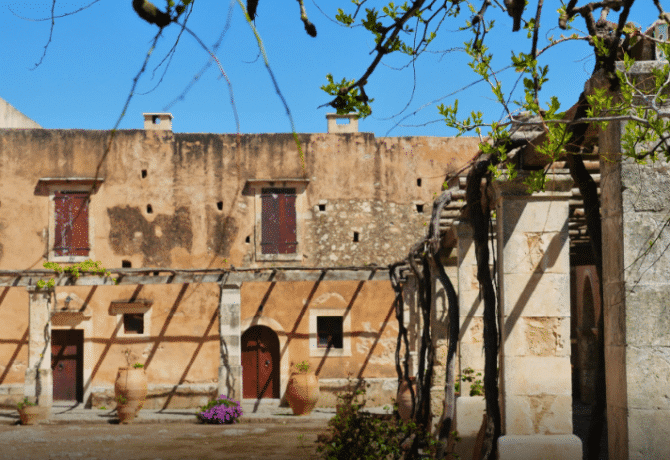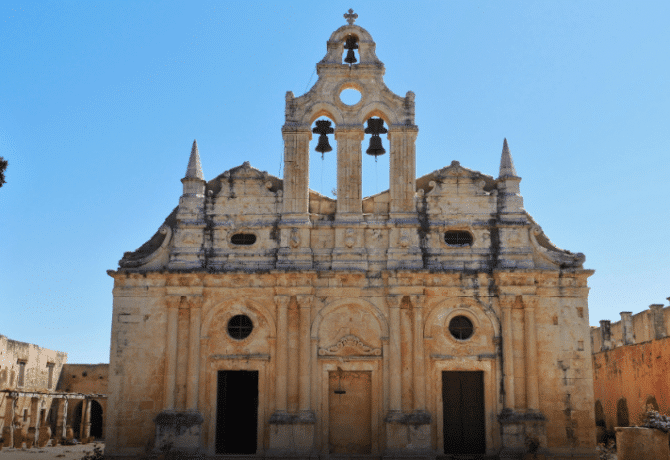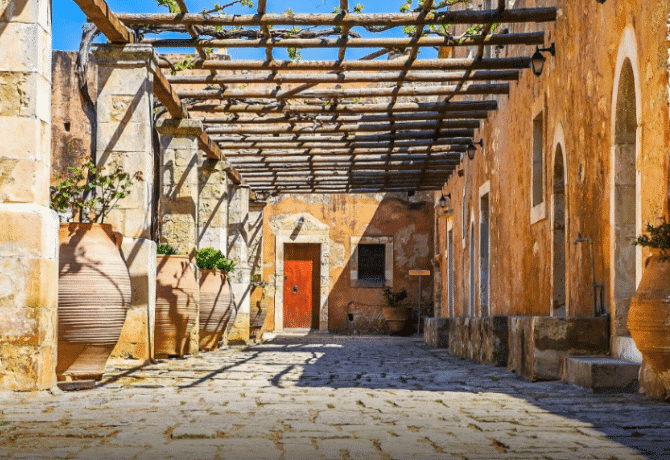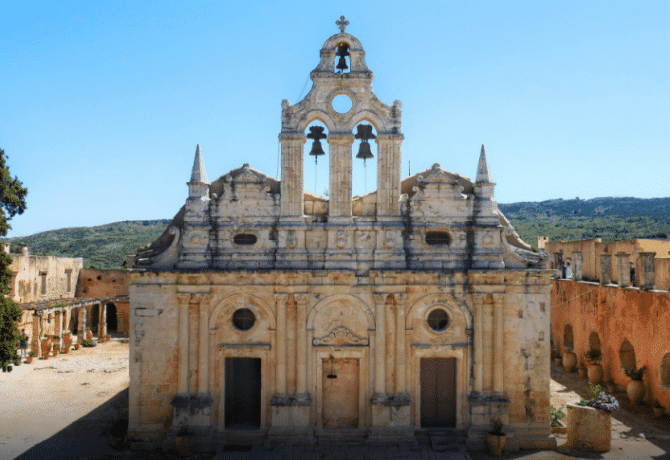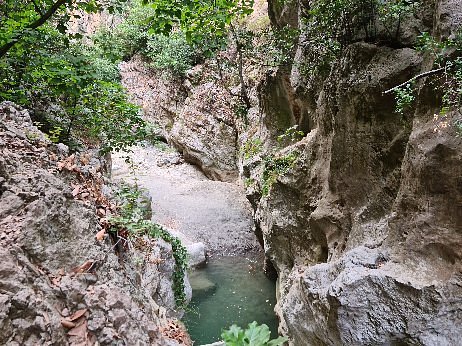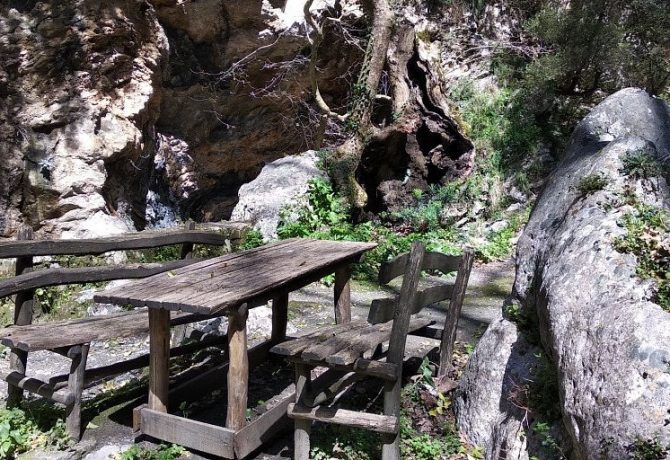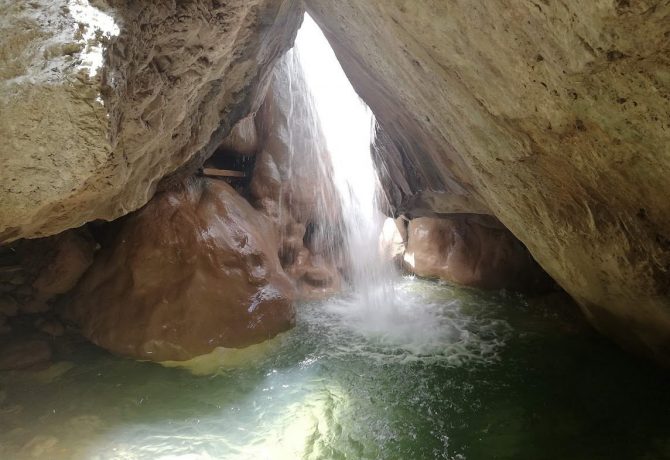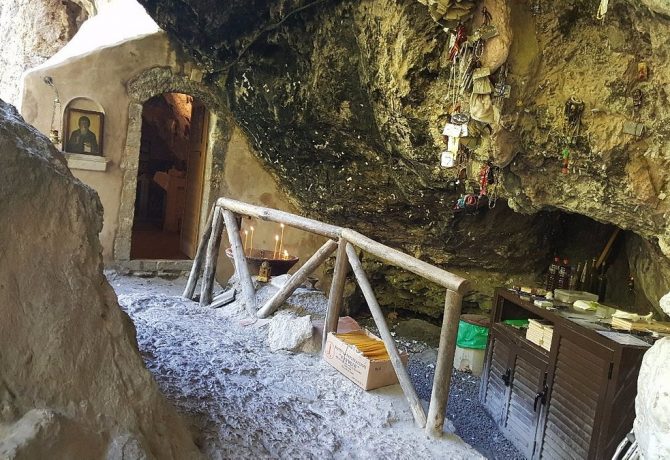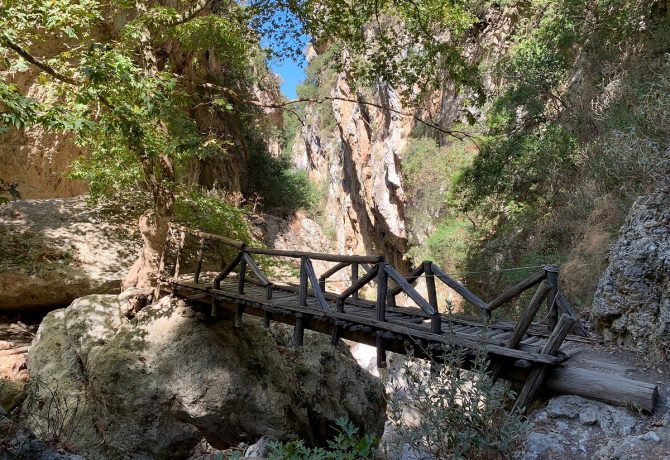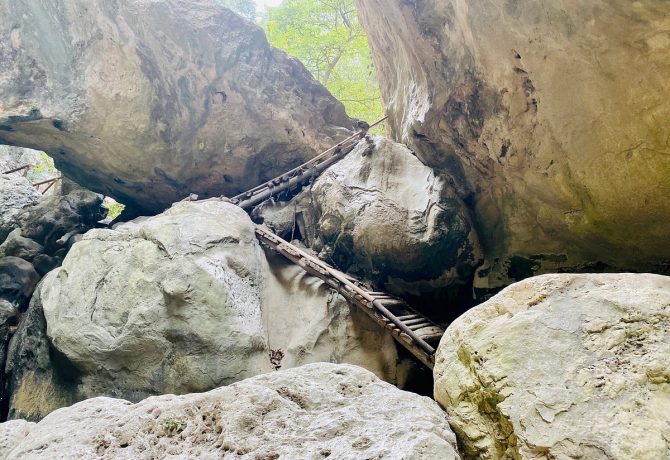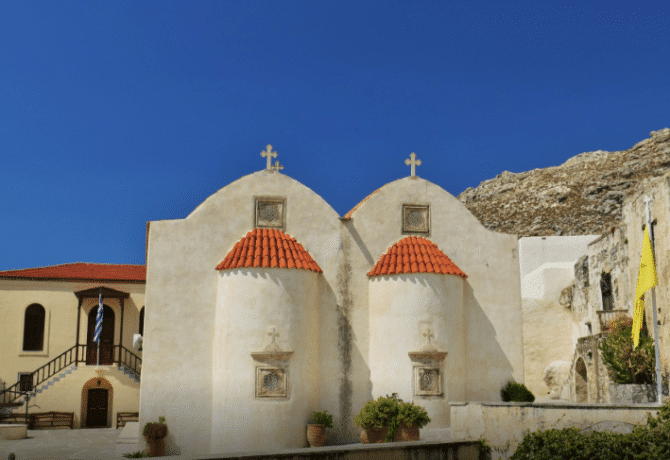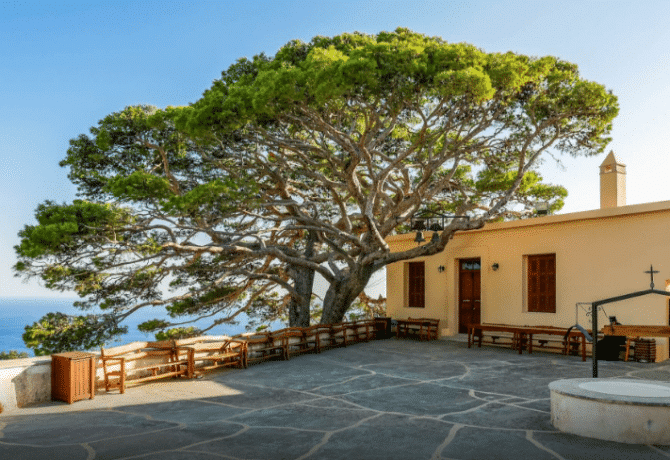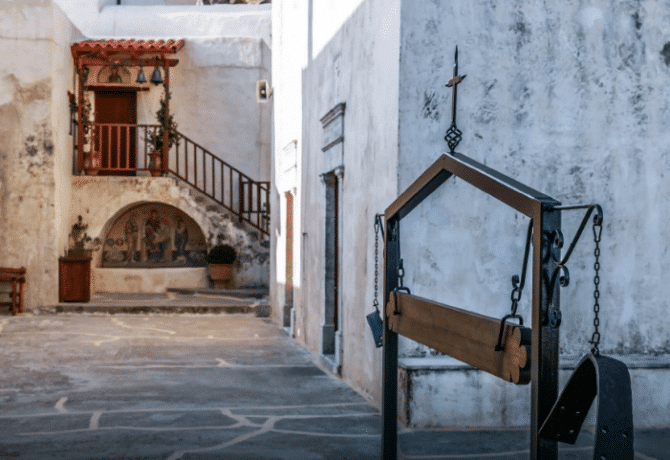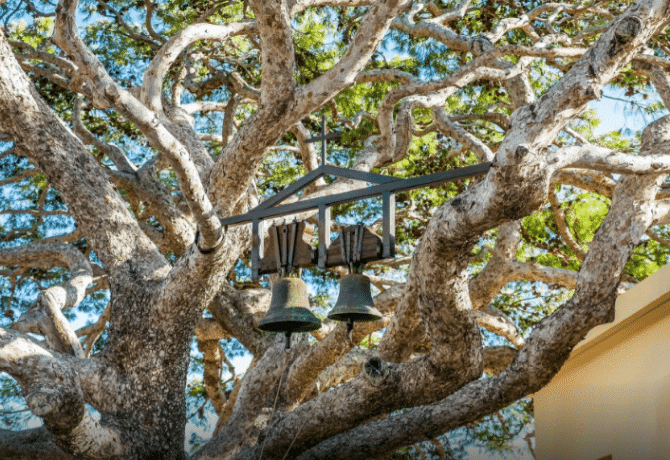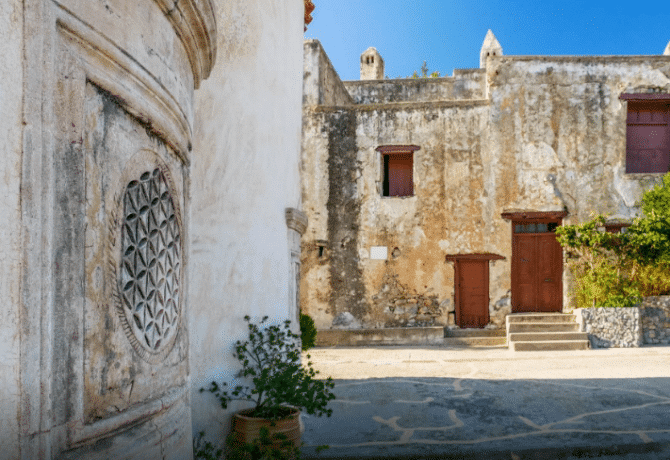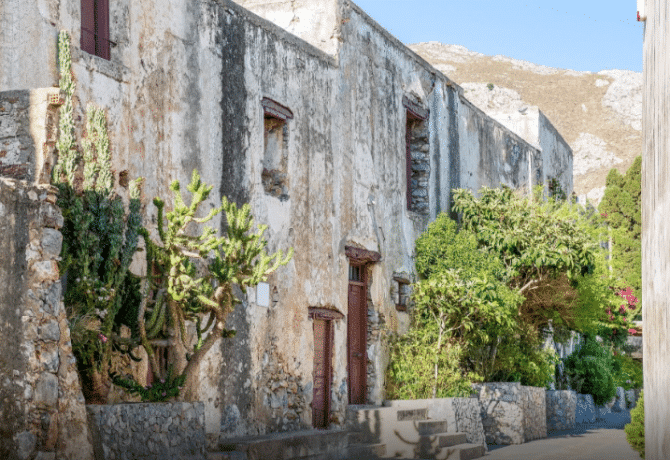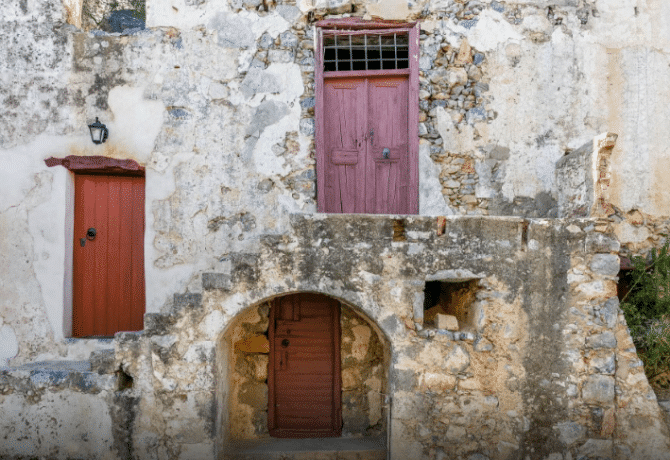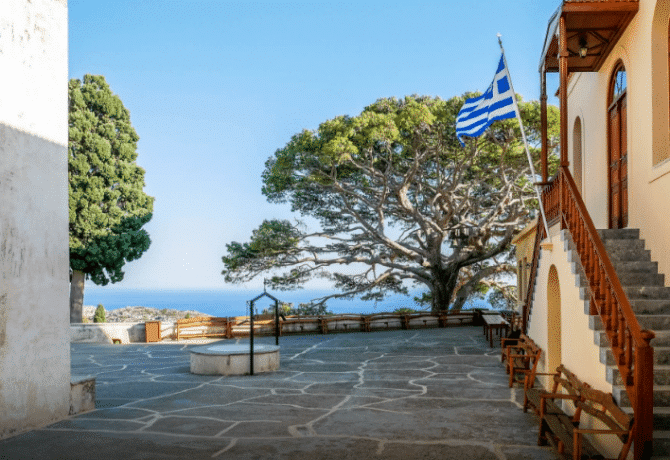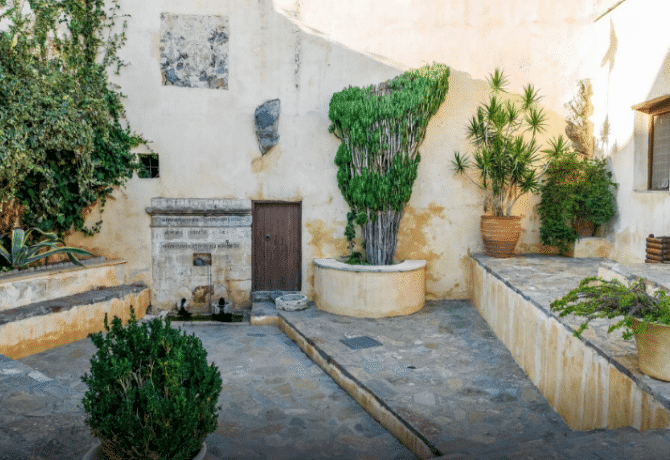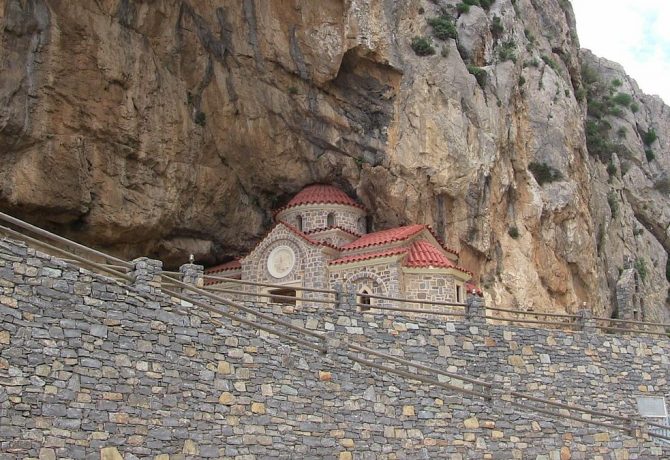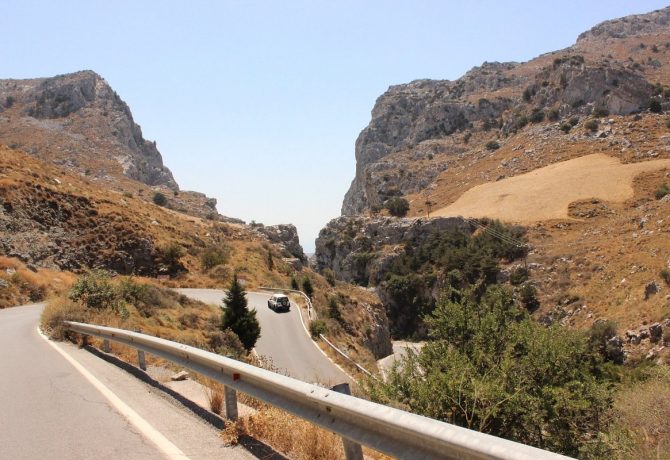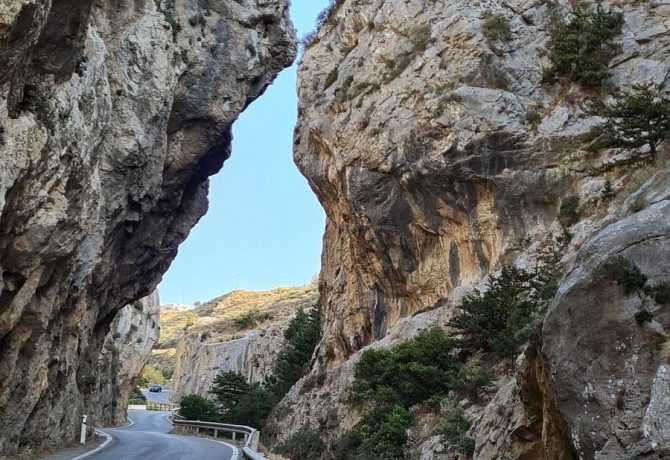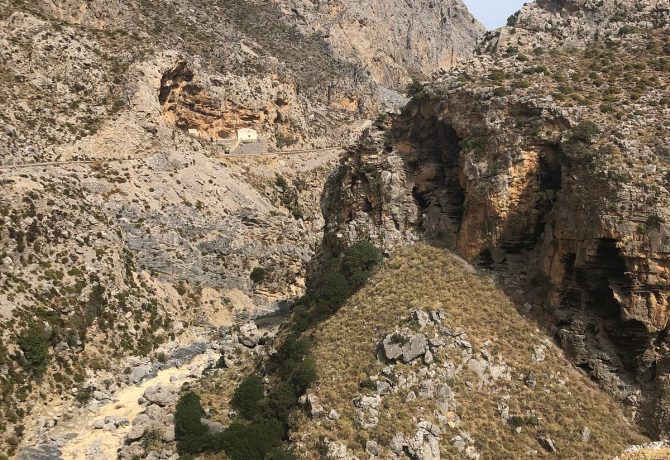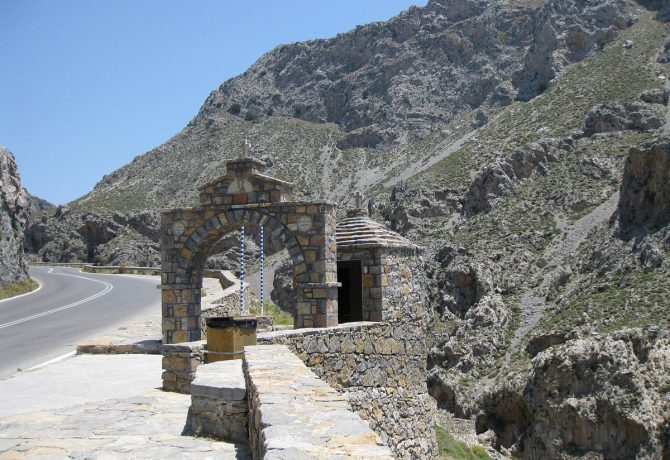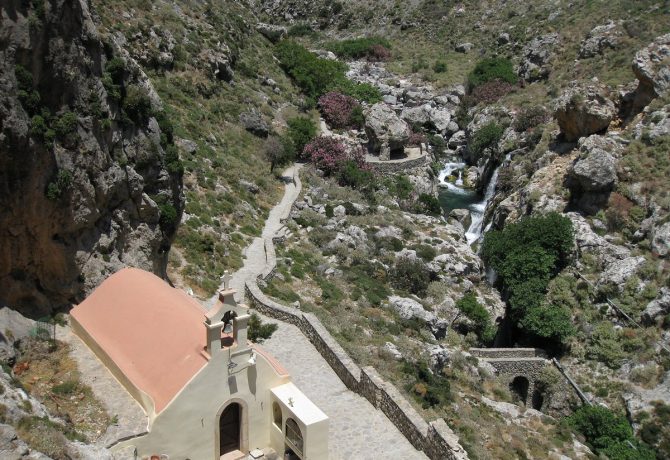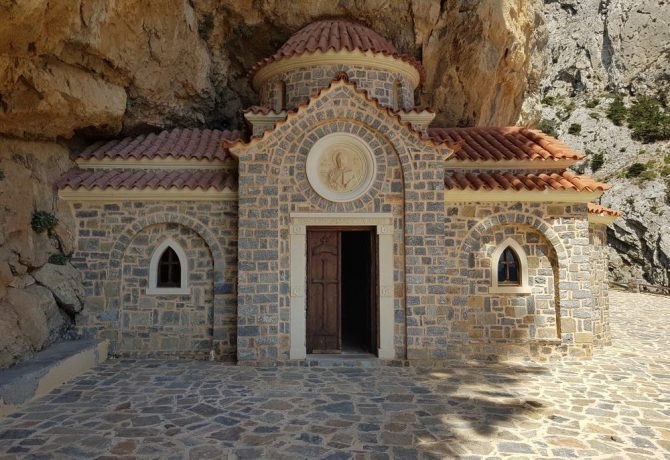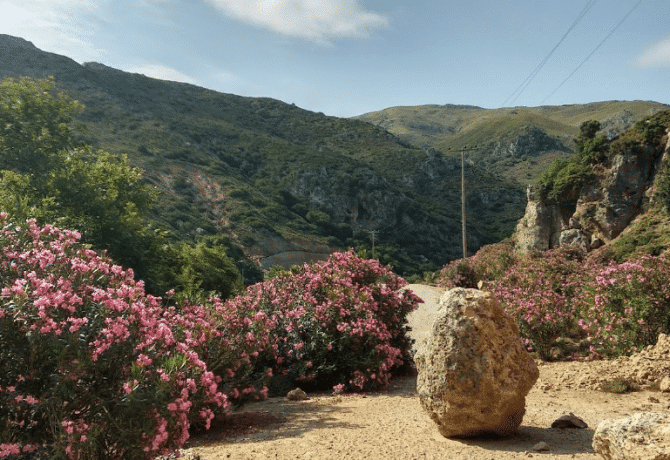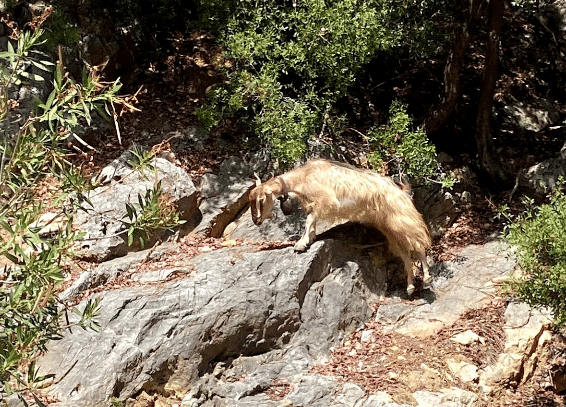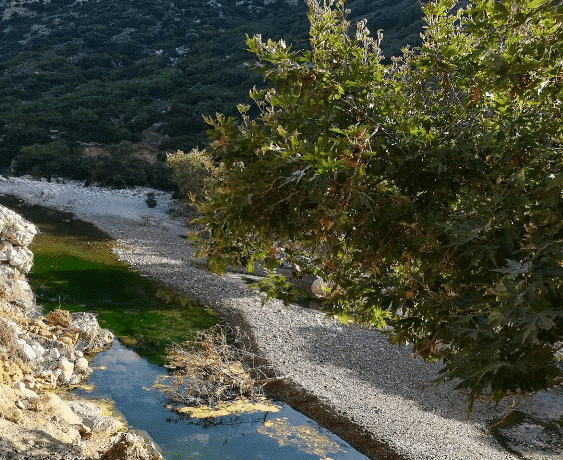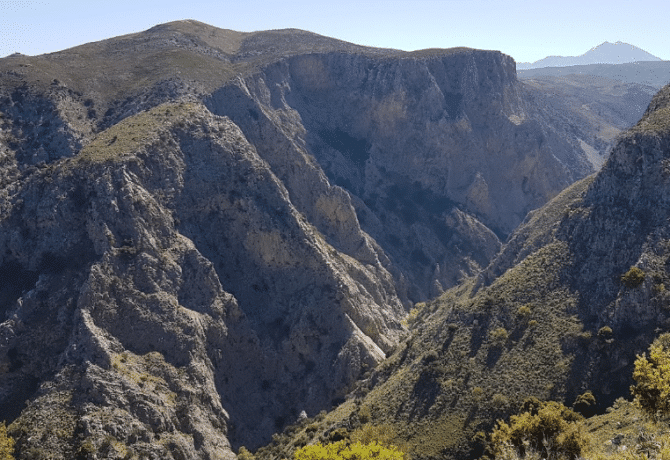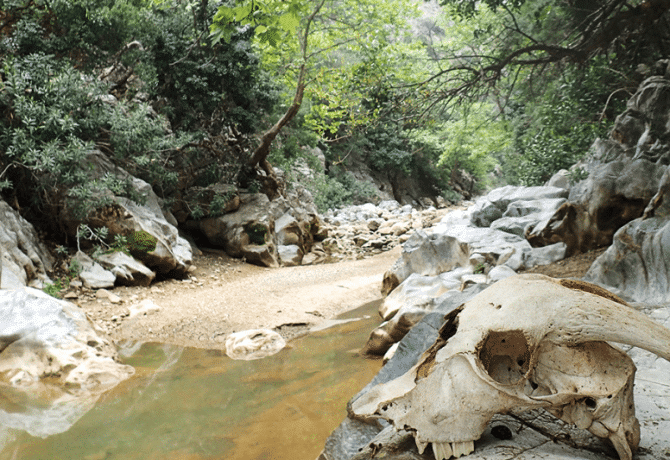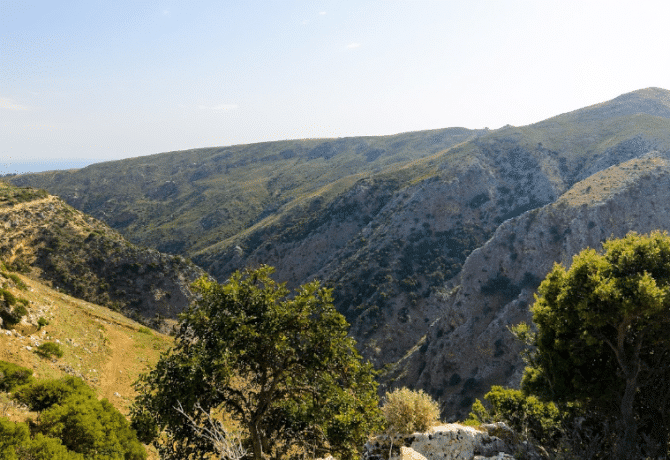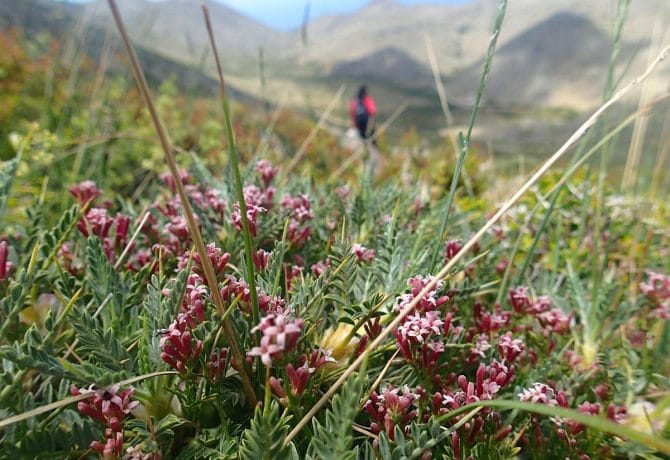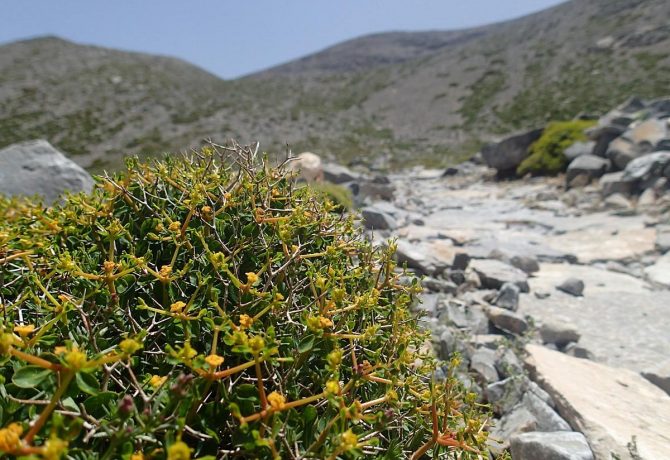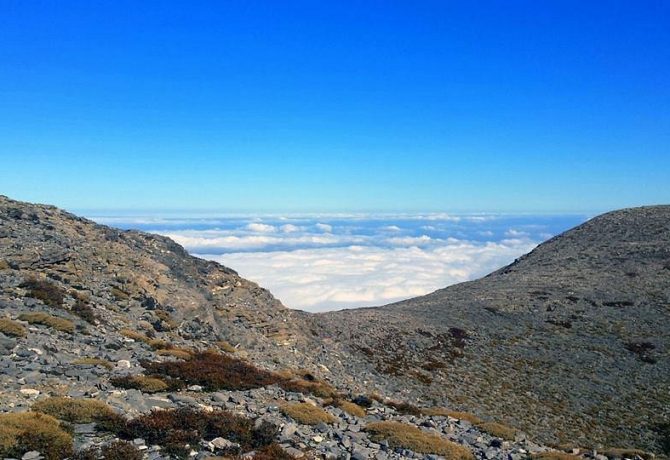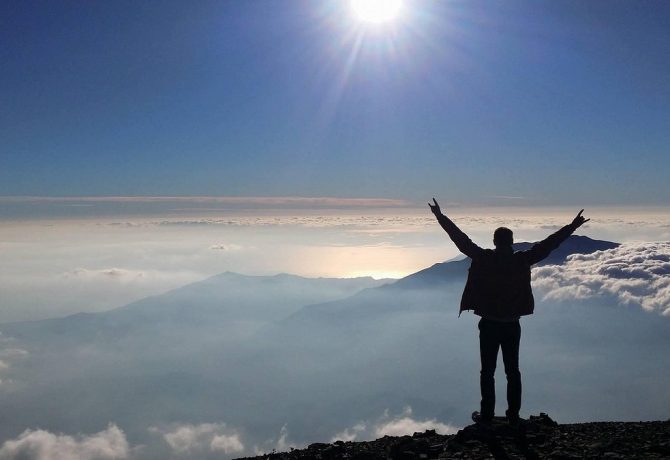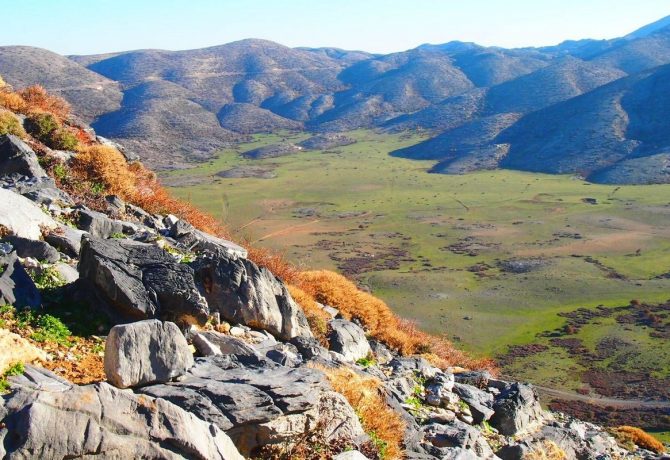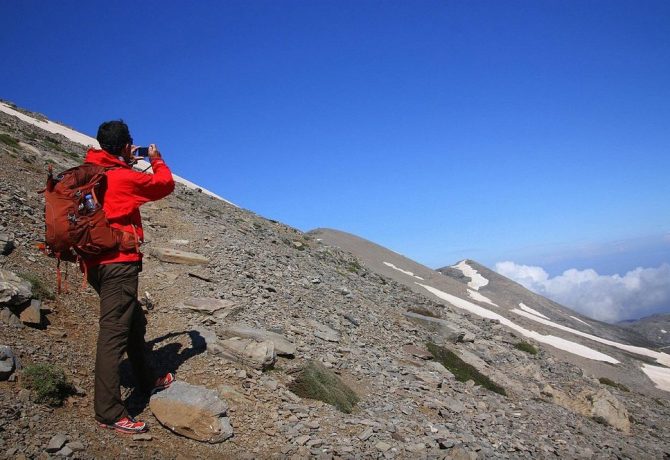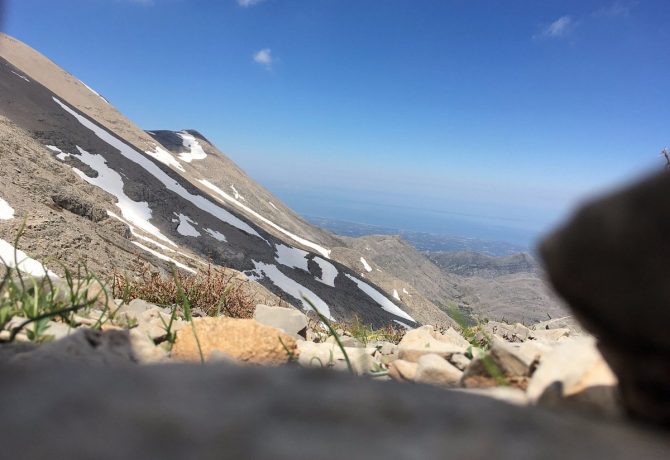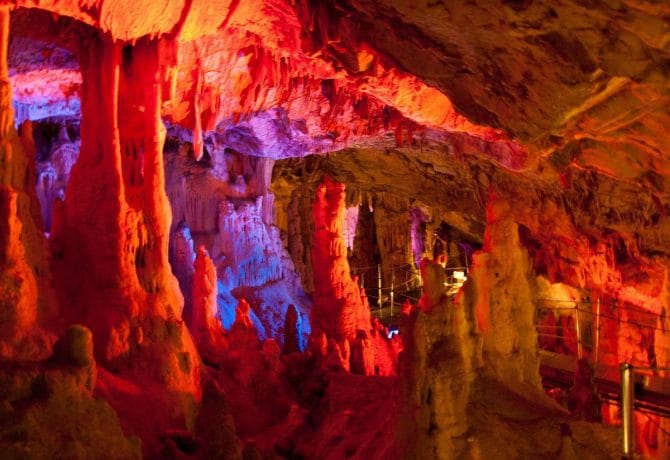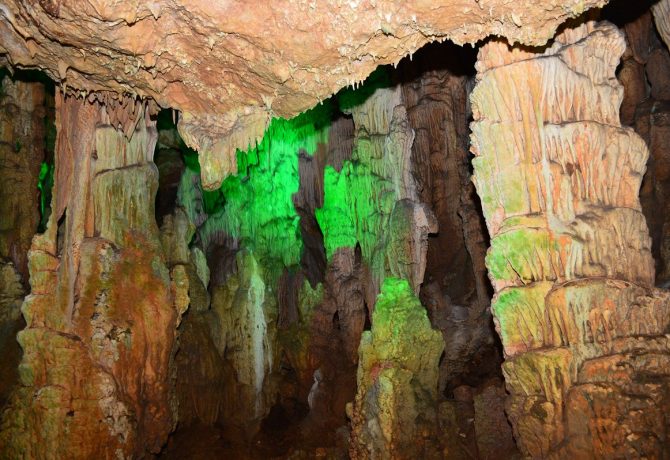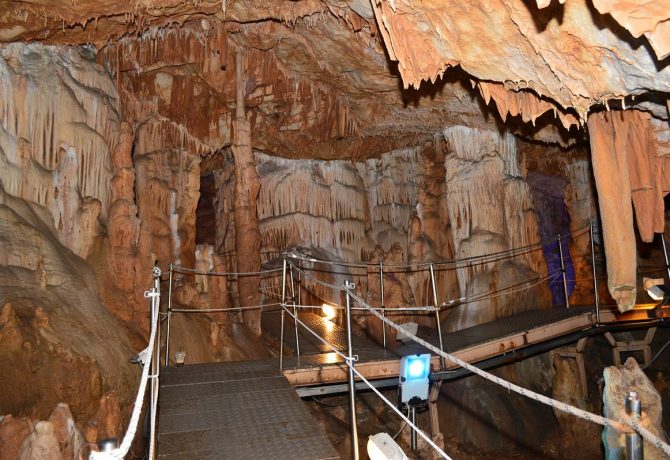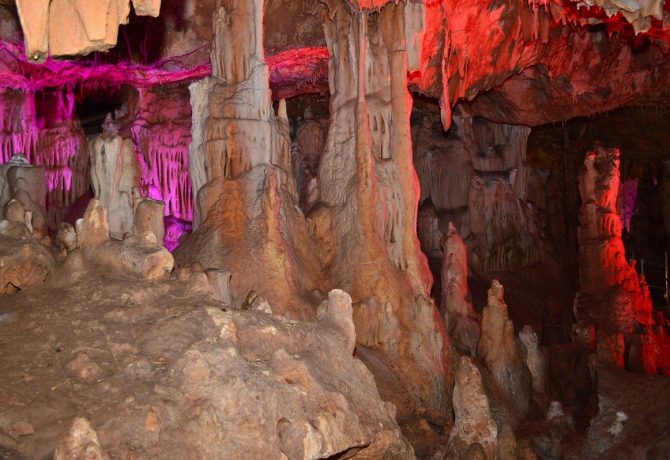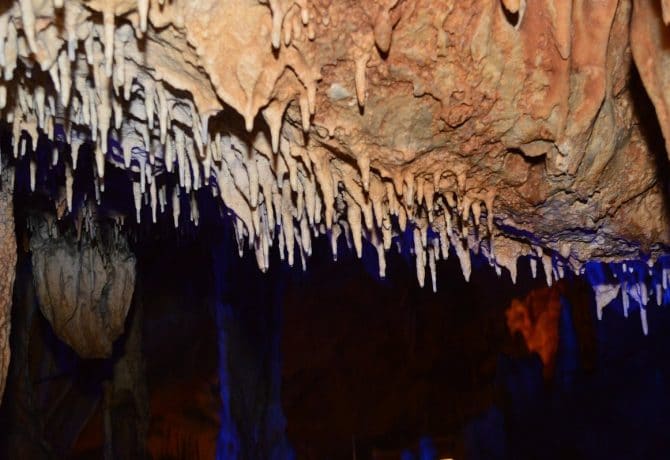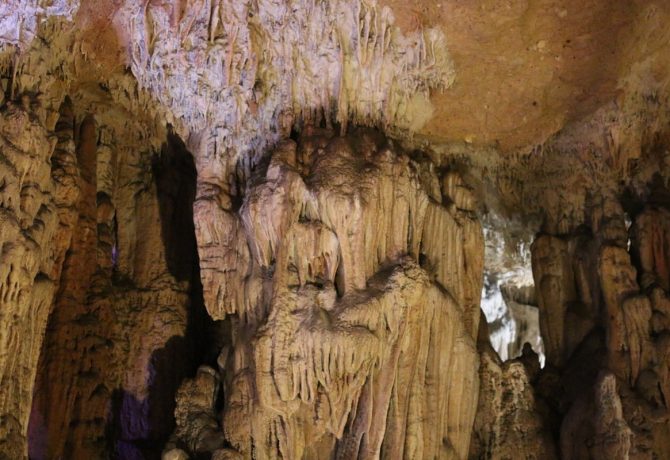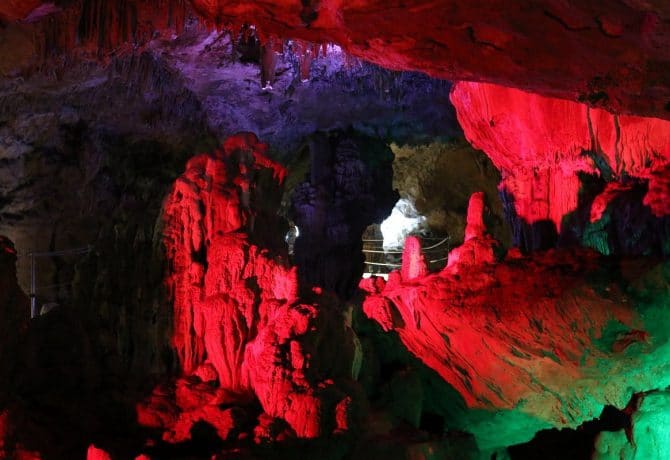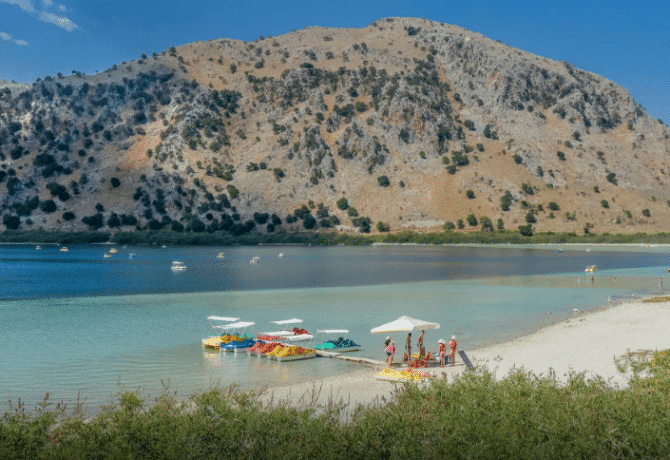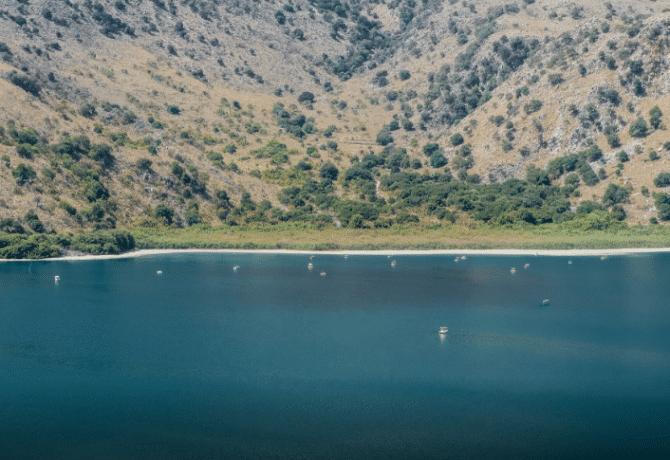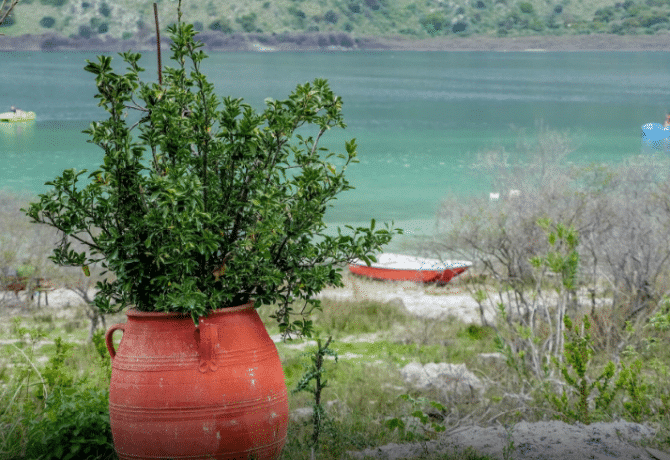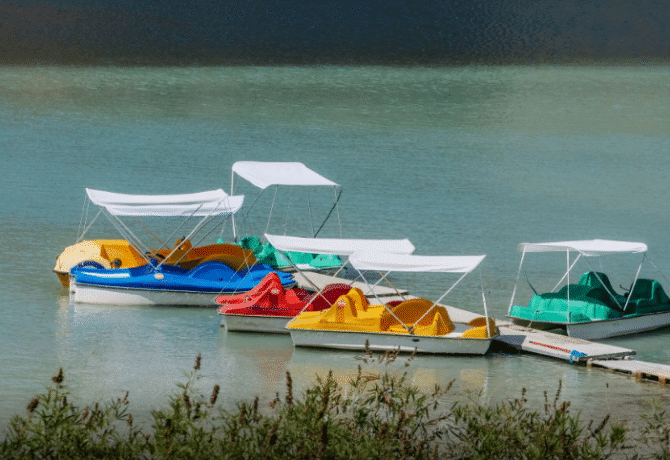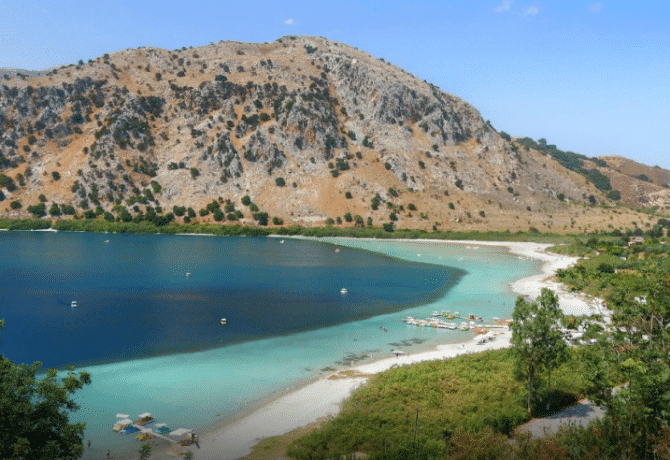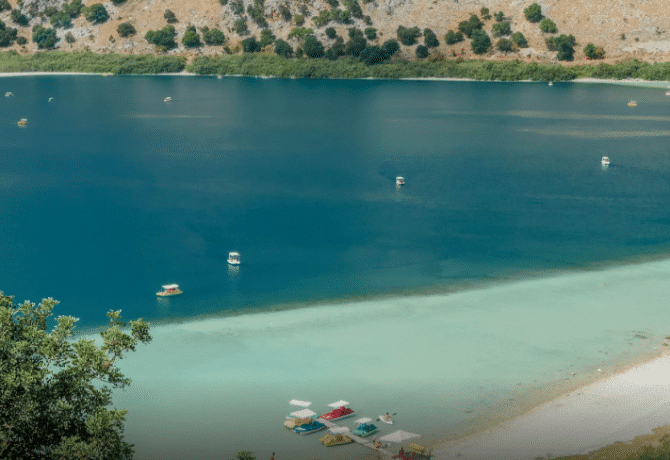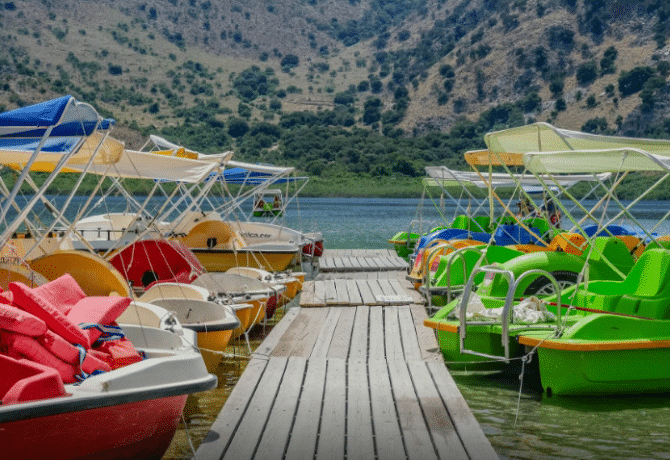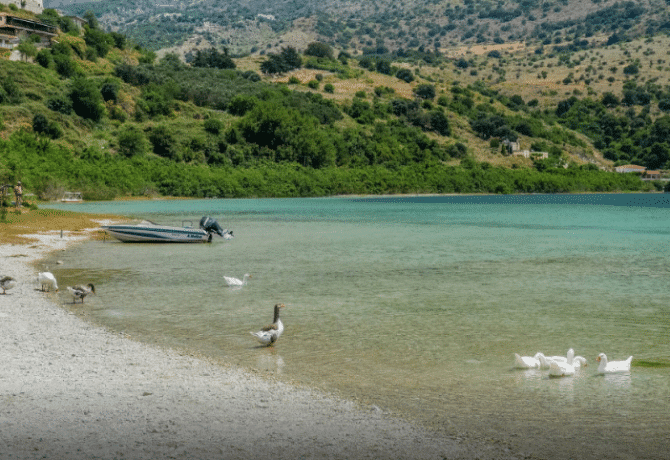The Greek port city of Rethymno is located in the north of Crete. It was built by the Venetians, although Ptolemy mentioned it as the first settlement in the north of Crete. Considered. that the first people settled here during the Minoan period. Today it is a tourist center with a developed infrastructure. The territory is divided into two main parts – the modern district and the Old Town. You can relax here all year round. In addition to architectural and historical sights, Rethymno is famous for a large number of festivals. The most popular is the carnival, which starts in the first half of February and lasts about a month. Orthodox Greeks live in the city, so all the holidays of the church calendar are celebrated here. The resort town is called the “Cretan Venice”. It consists almost entirely of cozy hotels, small restaurants, shops, beaches. Tourists who want to combine a holiday at sea with acquaintance with local history usually choose hotels in the Old Town. All city attractions are within walking distance from each other. They can be bypassed in one day.
For those who travel by car, it is best to leave the transport in the parking lot near the fortress of Fortezza. It stretches along the waterfront and is free. Experienced travelers are not advised to park in a paid parking lot near the port. During a storm (and it begins unexpectedly), waves roll on it, completely flooding with water. The car, of course, will not sink, but pleasant is not enough. The fortress is the most popular attraction of Rethymno, so it will be a great start for a one-day tour.
- 1 Fortress fortezza
- 2 Arsenal Building
- 3 Sultan Ibrahim Mosque
- 4 Bastion of St. Luke
- 5 Bastion of Saint Sozont
- 6 Powder magazine
- 7 North Entrance Vaults
- 8 Church of St. Theodore Trikhin
- 9 Residence of the Adviser to the Venetian Governor
- 10 Lighthouse and rethymno embankment
- 11 Old Town of Rethymno
- 12 Rimondi Fountain
- 13 Church of Our Lady of Angels
- 14 Neratze Mosque
- 15 Mikrasiaton Square or Fair Square
- 16 Guor Gate
- 17 St. Francis Church
- 18 Venetian Loggia Rethymno
- 19 Botanical Garden
- 20 Arkadi Monastery
- 21 Ancient cave church of St. Anthony
- 22 Preveli Monastery
- 23 Kotsifu Gorge
- 24 Prassano Gorge
- 25 Ida Mountain Range
- 26 Caves near Rethymnon
- 27 Lake Kournas
- 28 Attractions Rethymno on map
Fortress fortezza
The impregnable citadel was founded in 1540 by the Venetians. The fortress was built until 1569. It is located on the hill of Paleokastro. During the war with the Ottoman Empire, it was captured and destroyed. Then in 1590 it was rebuilt anew, but taking into account previous mistakes. As a result, Fortezza became the largest and fortified fortress of Crete. The Turks managed to capture it only in 1646 as a result of a long siege and an epidemic that began among the defenders. During the occupation, the Orthodox cathedral was rebuilt into a mosque, many residential buildings appeared on the territory of the fortress. Restoration and restoration took more than 20 years. Today, Fortezza is the closest to the view in which it was under the Venetians. The main gate is on the east side. The object is open from 08.00 to 20.00. Tickets – 4 euros (adult), 3 euros (children). At the ticket office, visitors are given a booklet with a description of the sights in different languages. In summer (usually in July) the fortress receives participants of the festival “Renaissance”. It goes on for 15 days. Details and videos about the festival can be found on the official website of the http://www.rfr.gr/.
Website: https://www.rethymno.gr/en/city/castel/castel.html
Address: Rethimno 741 00, Greece
Arsenal Building
The two-storey building of the arsenal is located at the Eastern Gate. It was built in 1581. The eastern gate was the most convenient exit to the city, so it was considered the main entrance to the fortress. They are wide enough for wagons with food and ammunition to pass through them. To the left behind the gate is the arsenal. It is decorated with arches. Today the building is used as an exhibition hall. It has an exposition of ancient weapons. Basically, these are stabbing, chopping and hand-held firearms. Turkish cannons and cannonballs simply lie on the ground, stacked in rows, around the perimeter of the fortress.
Sultan Ibrahim Mosque
It is best to inspect the bastion in a circle. If you turn towards the bastion of St. Luke, the next building will be the mosque of Sultan Ibrahim. This is nothing more than the decapitated church of St. Nicholas (16th century), rebuilt by the Turks into a mosque. Above the prayer hall rises a hemispherical dome (considered the largest in Greece), in the interior design there were lancet arcades. Mihrab is arranged in the side facing Mecca. The mosque was built in 1646. Today, restoration work is underway in it. The object is open to the public. The room is used for music concerts and exhibitions of works by local artists.
Address: Leof. Emmanouil Kefalogianni 27, Rethymno 741 00, Greece
Bastion of St. Luke
The corner bastion of St. Luke is well preserved. It is connected to the tower of the same name, which you can climb and explore the surroundings. The task of the bastion was to protect the city and the fortress from enemy attacks from the mountains. It is built in the form of the letter G. The internal space is occupied by rooms covered with domes. During the Second World War, the northern dome was damaged by a fascist shell. After the war, it was restored. Now restoration work is being carried out.
Bastion of Saint Sozont
On the opposite side of the bastion of St. Luke is the bastion of St. Sozont. The defensive system was designed by Venetian military engineers. During the restoration and restoration of the fortress, their drawings were used. All bastions were built on a single principle, connected by rectilinear sections of powerful walls, the thickness of which reached 1 m 75 cm. Sozonta is one of the three southern bastions that protected the approaches from the land. The fact is that Fortezza was practically impregnable from the sea, but did not have protective ditches from the land. This vulnerability was compensated by bastions.
Powder magazine
Next to the bastion of St. Sozont is a powder magazine. The high walls were well protected from attacks by stairs, and their thickness was almost impenetrable for projectiles. Defenders of the citadel could fight, being on the grounds built at the top of the bastions and through loopholes in the walls. The powder magazine served as a storage of ammunition. It is a rectangular building with ventilation and a dome. The walls of the building are thick, there is additional space between the doors and the room. These were precautions for the safe storage of gunpowder. The building was renovated in 1999.
North Entrance Vaults
Near the northern gate built a whole complex of storage facilities. They are located on both sides of the entrance. Three rooms are under domed roofs, two are open. Restoration and restoration work is carried out by the 28th Department of Byzantine Antiquities and the Department for the Restoration of the Historic Old Town of Rethymno. Today, one of the vaults has an exhibition hall, the rest are open for free inspection.
Church of St. Theodore Trikhin
Between the bastions of St. Paul and St. Nicholas in 1899, an Orthodox church was opened in honor of St. Theodore Trikhin. Apparently, this is one of the renovated Venetian churches, but its foundation is associated with the arrival of Russian troops in the framework of the peacekeeping operation. The Cretans called on foreign troops to help them reunite with their historic homeland, Greece. This was preceded by the events of August 25, 1898, when more than 600 Christians were killed and burned in their homes. After the arrival of peacekeepers, Rethymno found itself in the Russian sector. In 1898, the evacuation of the army of the Ottoman Empire began, and in the cities of Crete began to restore Orthodox values. The opening of the Church of St. Theodore Trikhin is associated with the name of the temporary Russian governor F.A. Shostak.
Residence of the Adviser to the Venetian Governor
The two-storey building was originally intended to house one of the advisers to the governor, who oversees the residents of Rethymno. Later, during the Turkish occupation, the house was used as a prison. The dwelling of the counsellors is located next to the bastion of St. Justinia. From the building there is a path to the House of the Ruler, the temple of Sultan Ibragin and the Residence of the Bishop, which are located in the central part of the citadel.
Near the fortress of Fortezza there are hotels«Phaedra Suites»(https://phaedrasuites.gr/),«Mythos Residence»,«Casa Vitae Villas».
After the fortress, you can continue exploring the city’s attractions, choosing those that attract the most attention.
Lighthouse and rethymno embankment
The pride of every seaside town is its embankment. In the daytime, vacationers walk along it and cars drive. In the evening, it is blocked, and the whole territory becomes a pedestrian zone. You can walk along the sea until the morning. There are a huge number of cafes, restaurants and clubs. All of them are located on the first floors of residential buildings and hotels. Some owners take out tables and chairs on specially equipped wooden decks on the beach. From the fortress to the lighthouse walk about 5 minutes. The lighthouse was built during the Ottoman occupation by the Egyptians. In 1830, the Turks placed Crete under the administration of the Egyptian viceroy Mehmet Ali. The lighthouse was built from 1830 to 1864. It was erected on the site of a former hydraulic structure of the Venetian era. the lighthouse rises above sea level by 15 meters. Until 1996, she regularly served ships entering the harbor. Then the lantern was extinguished, but the lighthouse remained one of the symbols of the city.
Address: Rethimno 741 00, Greece
Old Town of Rethymno
Without a walk through the historic center of the city, it is impossible to make a complete impression of Rethymno. Despite almost two centuries of occupation by Turkish troops, it managed to preserve the original Venetian layout of the streets. Buildings of the Turkish period added architectural features. Thanks to the Ottomans, Turkish baths, fountains, mosques, sahnisya, Muslim signs and inscriptions appeared here. In 1967, the Old Town was recognized as a single historical monument. It survived the eras of prosperity of the Byzantine rulers, the Venetian, Turkish and Egyptian occupation, the restoration of the Renaissance. There are preserved buildings built in different centuries, churches and minarets. The Old and New Towns are separated by the Great Gate or The Gate of Guor. This stone arch reminds that once the whole city was surrounded by a high wall, which has not survived to this day.
Official website of the city: https://www.rethymno.gr/en/city
Rimondi Fountain
One of the most charming decorations of the Old Town is the Rimondi Fountain. It was created primarily so that travelers and townspeople could quench their thirst. The drinking spring was built by Venetian masters by order of the Venetian governor of the city Alvise Rimondi. Today, this building is both a work of art and an architectural monument. It is located near the shore, to which pleasure craft moor. Tourists, tired of the hot sun, always stop near the fountain to quench their thirst.
Address: Mavrokordatou Alexanrou, Rethymno 741 00, Greece
Church of Our Lady of Angels
A real pearl among the temples not only of Rethymno, but also of the whole of Crete is the snow-white church of Our Lady of the Angels. It was built in 1609 by monks of the Dominican Order in honor of Mary Magdalene. When the island was conquered by the Turks, the temple was first transferred to the Orthodox community. Then the Ottoman authorities decided to rebuild it as a mosque. A minaret and a mihrab were added to the building, the interior design was also redone. Mistakes were made during the construction, so soon the minaret squinted and collapsed. After the liberation of Crete from the Turks, military barracks were equipped in the temple building. Once (according to legend) the Virgin herself appeared to two sentry soldiers and pointed out the place where the miraculous icon was hidden. The icon was found on the night of April 3-4, 1917. The temple was immediately transferred to the Orthodox diocese. The money for the restoration of the church was donated by a local resident – a terminally ill girl, in whose memory a memorial plaque was installed.
Address: Thessalonikis ke Foka, Rethymno 741 00, Greece
Neratze Mosque
In this grandiose structure with an impressive minaret and three hemispherical domes, it is impossible to recognize the church of the Venetian era. The building was originally built as the main cathedral of the Augustinian monastery in 1601. It was a classic basilica with a tiled roof dedicated to the Virgin Mary. In 1646 it was rebuilt by the Turks into a Muslim mosque. The minaret was built much later, in 1887. It has a height of 27 meters, two balconies and at one time surpassed the size of all the minarets of the East. Today it houses a conservatory, although in 1925 Neratze was again proclaimed a Christian church.
Site: https://www.rethymno.gr/en/city/monumenti/neratzes.html
Address: Emmanoil Vernardoy 2, Rethymno 741 00, Greece
Mikrasiaton Square or Fair Square
The new name Mikrasiaton (Asia Minor) square received relatively recently. From time immemorial it was the central square of the city, where holidays, fairs, processions and carnivals were held. There are administrative buildings, public and cultural centers. On the square there is a monument to the victims of the Greco-Turkish war of 1919-22. Then the losses of the Greek army exceeded 40 thousand people killed and 50 thousand wounded. According to the signed Treaty of Lausanne, an exchange of citizens took place between the countries. One and a half million Greeks were forcibly evicted from Turkey, and 600,000 Turks were forcibly sent from Greece to their historical homeland. This war received a second name – the Asia Minor disaster.
Guor Gate
One of the most important sights of the Old Town is the Great Gate or Gate of Guor. They were built during the reign of the Venetian governor Giacomo Guor (1556-1568). At that time, Rethymno was completely surrounded by a high fortress wall. With the outside world, the inhabitants were connected by three gates. They were opened in the morning and closed in the evening. To date, the arch and two semi-columns have been preserved. The pediment was removed and is now an exhibit of the Venetian Lodge. Partially survived the inner part of the gate.
Address: Antistaseos ke Dimakopoulou, Rethymno 741 00, Greece
St. Francis Church
A special place among the architectural attractions is occupied by the temple of Francis of Assisi. The basilica was built presumably in the 16th century by the monks of the Franciscan Order. It was the main temple of the monastery. Despite the small number of inhabitants, the monastery was in a special position. Here was the residence of the religious brotherhood of the Carmelites, the necropolis of the nobility and noble officials. During the Ottoman occupation, Ghazi Hussein Pasha turned the church into a Muslim prayer house. After the expulsion of the Turks, the building was restored. From 1887 to the present day it houses the department of the Archaeological Museum of Rethymno. The exhibition contains exhibits of the Minoan, archaic, classical, Hellenistic and Roman eras. The ticket price is 2 euros. Weekends are every Tuesday and Easter Sunday.
Site: http://odysseus.culture.gr/h/1/gh151.jsp?obj_id=3310
Address: Eth. Antistaseos 80, Rethymno 741 00, Greece
Venetian Loggia Rethymno
It is almost impossible to pass by this building with characteristic arched openings. There are no flashy signs on it, but all tourists know that there is another building of the Archaeological Museum. The loggia was built in 1538-40. The author of the project was the Verona architect Sanmiceli. He was engaged in the construction of defensive structures at this time, and at the same time built a place for meetings of the local nobility. New laws and regulations for the citizens of Rethymno were created here, and then publicly announced from the high steps of the main entrance. During the Turkish occupation, the loggia was rebuilt as a mosque, the arches were laid with bricks, a minaret was installed nearby. In 1930, the reconstruction of the monument began. The minaret was demolished, the arches were opened. Since 1950, the building belongs to the archaeological department. There is a storage, workshop and shop selling copies of artifacts to tourists.
Site: https://www.rethymno.gr/en/city/monumenti/la-loggia.html
Address: Eth. Antistaseos 80, Rethymno 741 00, Greece
In this part of the city you can stay for accommodation. Near the historical center are the hotels«Kamaraki Apartments»,«Daria’s Ηome» (https://dariashome.gr/), «Old Town Home near Swimming Beach».
Another day can be devoted to acquaintance with natural and religious attractions. Trips outside the city can be arranged by local tourist offices. Public transport is available. The bus station is located near the fortress of Fortezza. The best way to search for bus schedules is to use the service KTEL Crete (https://e-ktel.com/en/). In the city everywhere there are car rental points or hotels will help with transport.
Botanical Garden
In a city where the sun shines 300 days a year, there can be no botanical garden. Park “Biotopoy” represents all the amazing nature of the island of Crete in its diversity. The traveler will be clearly surprised when from exotic beaches he will find himself in cool gorges full of grasses, or in oak forests, or on plains with orchids, or even more so in the alpine zone of the mountains. The park consists of autonomous ecosystems of “biotopes”. Here grow herbs with healing properties, aromatic plants, ornamental flowers, endemics of Crete and Greece and some of the rare and endangered species. Among the various plants integrated into a single ecosystem of biotopes, there are a large number of animals, reptiles, amphibians, birds, insects and fish. Entrance fee. Adults – 5 euros, children – 3 euros. It is better to specify the time of visit on the site: http://biotopoi.blogspot.com/. The park is within walking distance just on the mountain outside the city.
Address: Kalaitzaki 3, Rethymno 741 00, Greece
Arkadi Monastery
25 km from Rethymno in the mountains is the ancient Orthodox monastery of Arkadi. The exact date of its foundation is not known. There are three versions. According to the first builder of the monastery, the monk Arkadius is considered, who found an Orthodox icon in the local olive grove and considered it a sign from above. According to the second version, the founder is the Roman Emperor Arkady, who founded the monastery in the early 5th century AD. Also, researchers are inclined to believe that the appearance of the monastery is associated with the name of the Byzantine emperor Heraclius I, who lived and ruled in the 7th century AD. In the form in which the monastery has survived to this day, it was built in the 16th century by Byzantine architects. In 1866, about a thousand Cretans were hiding in it from the Turks. The monastery was surrounded and destroyed. Since then, it has been considered a symbol of resistance to the occupiers. After the liberation of the island, the monastery was restored. Only the powder storage remained destroyed. Today it is a large museum complex with unique buildings, relics and artifacts. Several monks still live here, who look after cleanliness and order. Admission is free, but a donation is required. From Rethymno there are buses and a tourist train Happy Train.
Website: https://www.arkadimonastery.gr/
Address: Arkadi 741 00, Greece
Ancient cave church of St. Anthony
To get to the cave temple of the patron saint of children Anthony, you need to drive to the settlement of Patsos. It is almost impossible to get lost here. To the depression in the rock, where the saint lived, and to a small chapel built nearby, a path with railings leads. Icons are placed in the cave, candles are burning. You can leave small money in the locker. Parishioners leave notes with requests to cure a particular disease, attaching them to the walls. When planning a trip, you need to take into account that you will have to climb the mountain, so the shoes should be comfortable.
Address: Gorgolaini 700 13, Greece
Preveli Monastery
37 km from Rethymno is the stavropegic monastery of the Constantinople Orthodox Church preveli. It was founded in the 16th century, when Crete was part of the Venetian Republic. When the main temple was built, residential and farm buildings are not exactly known, but the engraving “1594” remained on the bell tower. The monastery has experienced several occupations, destruction and restorations. Today it is a functioning monastery. On its territory a small museum with objects of church life has been created. For children will be interesting a small menagerie.
Site: http://www.preveli.org/index.html
Address: Foinikas 740 60, Greece
Kotsifu Gorge
This gorge is located on the way from Rethymno to the town of Plakias. Travelers do not in vain have doubts about the expediency of passing it on foot. A motorway is laid through it, and from the sights – the Church of St. Nicholas the Wonderworker, where you can stop on the road. The object is unique in that it is located in a cave, and the entrance portal has an unusual color. During the flood period, you can admire the Beucindas waterfall. In other seasons, it dries up. The length of the gorge is 1 km 800 m, width from 10 to 600 meters. The rocks reach a height of 500 m.
Address: Epar.od. Rodakinou – Sellias, Kato Rodakino 740 60, Greece
Prassano Gorge
You can’t drive through this gorge by car. It is a canyon in the mountains, washed by meltwater. A walk along it will take about 4 hours (length 10 km). From November to May, a river flows through it, so tourists are advised to go on a hiking trip through the Prassano Gorge from mid-June to October, when the channel dries up. The beginning of the road is 10 km southeast of Rethymno. The path passes through water-sharpened boulders and stones. In the coastal rocks there are small caves. The gorge is an important biotope of Crete. It is home to populations of Boneli’s buzzards and eagles.
Address: Rethimno 741 00, Greece
Ida Mountain Range
The highest mountain range of Crete Ida (Psiloritis) is located in the rethymni nome. You can get to it by bus (about 3 hours drive) or car / taxi (about 2 hours of travel). The ridge consists of five vertices. On its western slope is the arkadi monastery. In the east there is the Nida plateau with the entrance to the Ideyskaya cave, where, according to legend, Zeus grew up. The tops can be climbed by lift. On the top of Skinakas built the observatory of the same name. On the southern slope is the cave of Kamares, in which vessels and utensils of the Minoan period were found. People come here for a unique photo shoot and mountain air. The whole territory is a geopark listed as a UNESCO protected site.
Website: https://www.psiloritisgeopark.gr/
Address: Kouloukonas 740 51, Greece
Caves near Rethymnon
Near the city in walking distance there are also unique caves. One of them Sfendoni was formed more than 5 million years ago. It has a depth of about 300 meters. Visitors can only visit the upper part of it. Bridges with handrails are laid along it, lamps are located along the perimeter. The attraction of the cave are stalactites and stalagmites of unusual colors. Their shades range from snow-white to blood-red. The second cave is called Melidoni. It is located 3 km northwest of Sfendoni. According to legend, the defender of the island of Talos lived in it. Locals still believe in the bronze warrior.
Address: Sfendoni Cave , Zoniana 740 51, Greece
Lake Kournas
25 kilometers southwest of Rethymno is the deepest freshwater lake in Crete Kournas. The landmark is the town of Georgioupolis. In summer, the water warms up to 25 degrees, so the territory is landscaped for the beach. It has free sun loungers, souvenir shops, cafes, catamaran rental. On the south side is the Qurna Cave with multi-level entrances. The picturesque place is protected by the European program for the protection of the environment. on the wild shore there are ducks, geese and freshwater turtles. Fishing is strictly prohibited. In wild areas, the shores are muddy. The lake from Rethymno can be reached by public transport with a change in Georgioupolis. By car, the road will take about half an hour.
Near Lake Kournas there are hotels «Villa Georgioupolis – HER01103a-OYB», «Dias», «Villa Oscania». You can stop for a few days to relax in the bosom of wildlife.

